Have Questions? Not Sure What You Want or Need?
If you just want to talk to someone about a future in the HVAC industry...
Give Us a Call at
(205) 728-7254

The holiday season is when most people take a step back from work, spend time with family, and enjoy the warmth of home. But for HVAC technicians, this is not only one of the most meaningful times of the year; it’s also one of the busiest. While others are relaxing by the fireplace, HVAC pros are out in the field, ensuring that those homes and businesses stay warm and comfortable.
If you’re training for a career in heating, ventilation, and air conditioning, then understanding what life is like for an HVAC technician during the holidays can give you valuable insight into both the challenges and rewards of this career path.
Winter weather puts every heating system to the test. Furnaces, boilers, and heat pumps that were running smoothly in fall can fail under heavy demand when temperatures plunge. That’s when HVAC companies get flooded with emergency calls.
Homeowners waking up to a cold home on Christmas morning or business owners struggling to keep their doors open rely on HVAC technicians to restore comfort quickly. As a result, many HVAC professionals take turns being “on call” during the holidays, responding to urgent repairs during nights, weekends, and even on the holidays themselves.
For students, this is a clear example of how vital HVAC work really is. It is an important reminder that the trade isn’t just about fixing equipment—it’s about keeping families safe, warm, and healthy when it matters most.

While the work can be demanding, HVAC technicians often find the holiday season to be both profitable and fulfilling. The surge in service calls often means extra hours and overtime pay, which can make a big difference during the gift-giving season.
That said, balancing work and personal time takes effort. Many HVAC companies rotate holiday shifts so everyone has a chance to celebrate, but emergencies don’t always happen on schedule. New techs will need to learn to adapt, such as finishing up a call before heading to a family gathering, or celebrating a little earlier or later than usual.
Still, the satisfaction of helping someone regain heat in their home or business often makes those sacrifices worthwhile. Many techs say that the gratitude they receive from customers is especially heightened during the holidays, and it reminds them why they chose the trade in the first place.
One of the key lessons you’ll learn in HVAC training is the importance of preparation, and nowhere is that more evident than during the holiday season. Experienced technicians start preparing well before winter hits.
Fall is the prime time for preventive maintenance calls, where systems are cleaned, filters are replaced, and safety checks are performed. This helps homeowners avoid midwinter breakdowns and ensures systems are ready for peak demand.
For students, mastering these preventive maintenance steps in the classroom or lab helps you build the foundation for real-world success. You’ll learn how to identify potential failures before they happen and keep your customers’ systems running efficiently.
HVAC companies also make sure their service vehicles are stocked with essential parts like igniters, control boards, blower motors, and thermostats, since many suppliers are usually closed during the holidays. When you’re the tech on call, being prepared means you can complete repairs quickly and confidently, even on a snowy night.

Technical skills will get you far in HVAC, but customer service and professionalism are just as important, especially during the holidays. Homeowners calling for help may be stressed, frustrated, or even panicked. Knowing how to stay calm, explain the problem clearly, and offer solutions will make a huge difference in your customer’s experience.
HVAC training programs teach not only how to diagnose and repair systems, but also how to communicate with customers effectively. During high-pressure times like the holidays, those soft skills can turn a one-time service call into a loyal customer relationship.

For apprentices and entry-level technicians, the holiday season offers an abundance of opportunities to gain invaluable experience. You’ll see a wide range of heating issues, from ignition failures and thermostat malfunctions to airflow problems and defrost cycles. Each service call becomes an opportunity to apply what you’ve learned in training and sharpen your troubleshooting skills.
Because demand is so high in the winter, newer techs often get more hands-on opportunities during this time than they might in slower seasons. Many employers notice who steps up during these busy periods. Proving your reliability and skillset during the hectic holiday season can lead to promotions, raises, or specialized training opportunities later on.
Ask any seasoned HVAC technician, and they’ll tell you that there’s something special about this line of work around the holidays. Knowing that your skills make a real difference in people’s comfort and safety gives the job a sense of purpose that few careers can match.
You may be out fixing a furnace while others are unwrapping gifts, but when you leave that home warm again, you’ll have given someone the best gift possible: peace of mind.
At BTrained, our HVAC training programs prepare students for every season of the job, including the busy holiday months. Our hands-on training helps you build the technical expertise, customer service skills, and confidence you’ll need to thrive year-round.
The holidays can be demanding, but they also show exactly why HVAC is such a rewarding and respected profession. If you’re ready to start a career where every day brings new challenges, steady work, and the satisfaction of helping others, now is the perfect time to begin your training.
Start your HVAC journey today and in just 12 weeks, you could be the one keeping homes warm and families comfortable. At BTrained, our program is approved by the Alabama HACR Board as a Pre-Examination Curriculum. Our graduates are eligible to apply to sit for the Alabama HACR certified contractor examination.
BTrained’s HVAC training programs fill up very quickly, so do yourself a favor–enroll today and secure your spot in one of our upcoming HVAC training programs. Get the education and skills you need to become an in-demand, and highly valued HVAC tech at BTrained.
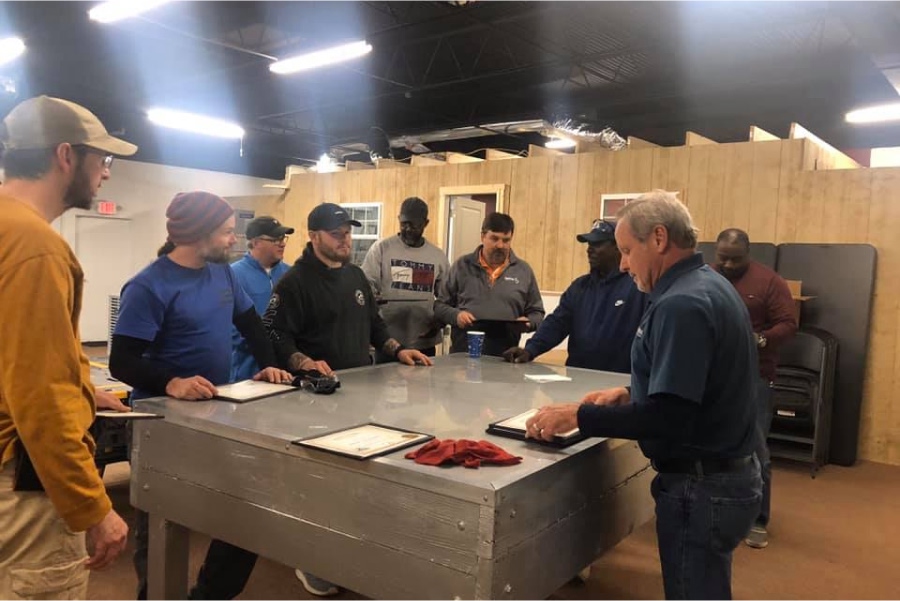
If you’re thinking about embarking on a career that combines technical skills, problem-solving, and real-world impact, then getting trained in HVAC could be your perfect fit. The heating, ventilation, and air conditioning (HVAC) industry is an essential part of modern living because it keeps homes, offices, and industries safe and comfortable year-round. Whether you’re fresh out of high school, switching careers, or ready to develop a trade that’s always in demand, enrolling in an HVAC training program can open up a world of fun, exciting, and lucrative opportunities.
Here are the 10 best things about getting started in an HVAC training program.
HVAC technicians are always in demand. Nearly every home, business, and public building relies on heating and cooling systems that need regular maintenance and skilled installation. As older technicians retire and systems evolve with newer technology, the need for well-trained HVAC professionals continues to grow.
According to the U.S. Bureau of Labor Statistics, employment in the HVAC field is expected to remain steady, with thousands of new openings each year due to replacement needs and system upgrades.
Unlike four-year college degrees, most HVAC training programs can be completed in as little as 12 weeks, depending on the school and level of certification. Some programs even offer express learning options that compress the 12-week program into a two-week crash course into HVAC. What this means is that you can go from classroom learning to hands-on work in the field faster—and start earning sooner.
HVAC training isn’t just theory—it’s highly practical. You’ll learn how to install, repair, and maintain systems, read blueprints, use specialized tools, and understand electrical components, air flow dynamics, and refrigeration cycles. These hands-on skills make the job engaging, rewarding, and never the same from one day to the next.
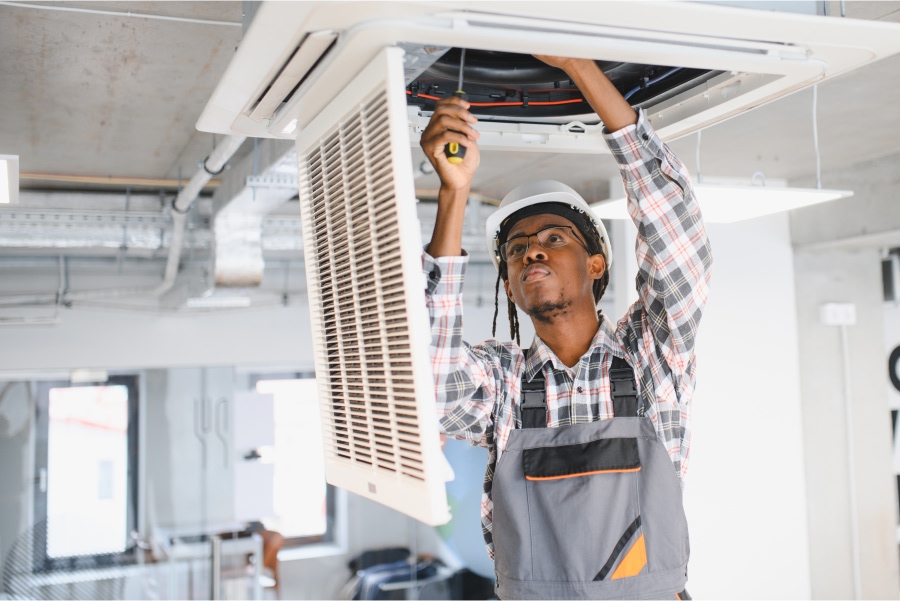
HVAC technicians can earn competitive wages right out of school, and experienced techs or specialists can command even higher pay. With opportunities to advance into roles such as service manager, estimator, or business owner, there’s a strong earning potential in this field. Plus, because heating and cooling are so important to home and business owners, HVAC technicians also benefit from overtime pay, bonuses, and steady year-round work.
No two days are exactly alike in the HVAC world. One day you might be troubleshooting a rooftop commercial system; the next, you could be installing a residential heat pump or diagnosing a ventilation issue in a hospital. This variety keeps the work fresh and intellectually stimulating, making it an ideal career choice for those who enjoy problem-solving and working with their hands.
HVAC is a unique trade because its systems involve elements of electrical work, plumbing, and refrigeration. The training you receive crosses over into multiple technical areas, giving you a strong foundation in mechanical systems and diagnostics. This versatility can lead to other related career paths down the road, such as energy auditing, building automation, or green technology installation. With a foundation in HVAC, you’re capable of taking advantage of a whole world of employment opportunities, in or outside of the field.
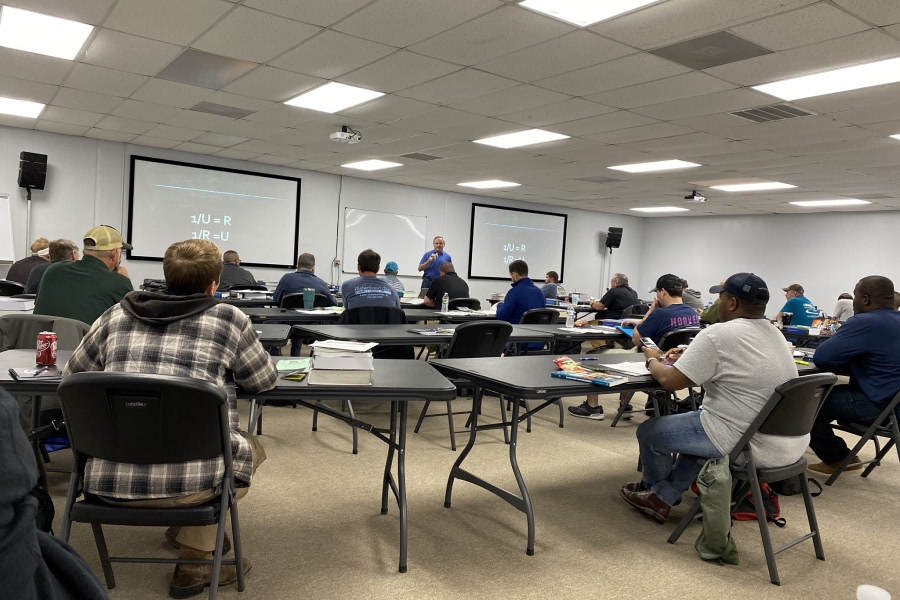
Once you’ve completed your initial training and earned certification, you can choose to continue to grow. Many technicians go on to specialize in areas like commercial HVAC, system design, or energy efficiency consulting. Others become contractors or start their own businesses. The career ladder in HVAC is wide open to those who keep learning and improving their skills.
No matter the economy, people and businesses need heating and cooling. HVAC technicians provide a vital service that supports health, comfort, and safety in homes, hospitals, data centers, and beyond. It’s a career where you can take pride in knowing that your work directly impacts people’s quality of life. There’s nothing more rewarding than seeing the relief in a customer’s eyes when you get their heat back up and running on a cold winter’s night.
HVAC systems are becoming smarter, more energy-efficient, and increasingly integrated with renewable technologies like solar and geothermal systems. In training programs, you’ll get introduced to these innovations to help prepare you for the future of the industry. Knowing how to work with smart thermostats, variable refrigerant flow systems, and eco-friendly refrigerants gives you a competitive edge in today’s market.
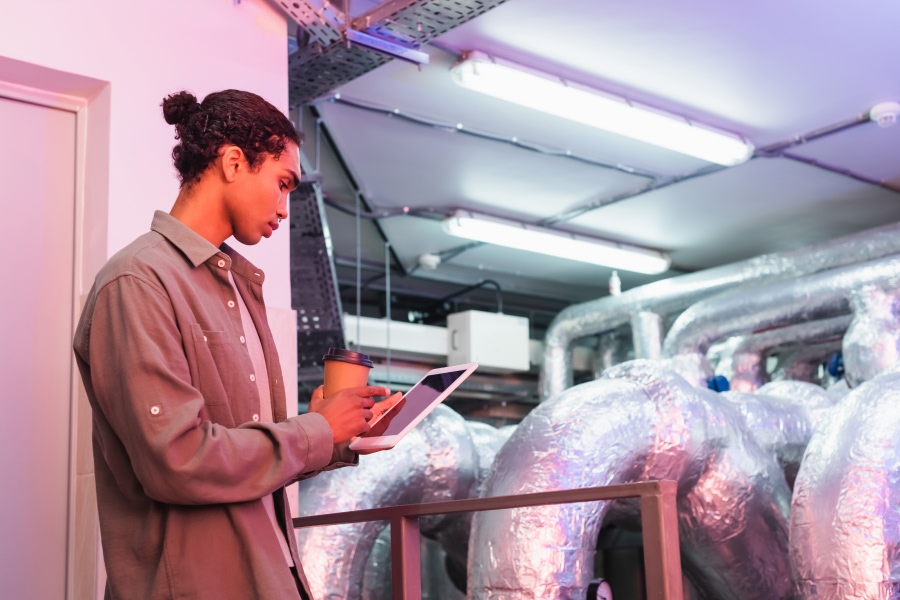
HVAC work offers both job security and the freedom to build your career path your way. Many technicians choose to work for established companies, while others enjoy the flexibility of self-employment. Since HVAC systems need regular service and replacement, technicians can count on a steady flow of work year after year. And while AI is threatening so many other professions, new and emerging HVAC techs can rest assured knowing that the field they are entering will always require skilled persons with industry know-how and hands-on experience.
Enrolling in an HVAC training program is one of the smartest moves you can make if you’re looking for a career that’s practical, in-demand, and rewarding. You’ll gain valuable technical skills, enter a field with long-term stability, and have opportunities to grow and specialize as technology evolves.
Whether your goal is to become a technician, contractor, or system designer, HVAC training lays the groundwork for a lifelong career built on skill, independence, and opportunity. It’s not just a job—it’s a profession that keeps the world running comfortably.
At BTrained, we offer a comprehensive 12-week training course that will provide you with all the education and hands-on skills you need to enter this exciting field. Our classes are held in the evening, so they won’t interfere with your current job’s responsibilities. Our program is also approved by the Alabama HACR Board as a Pre-Examination Curriculum, allowing graduates to take the certification examination. Once the participant graduates, they will be eligible to apply to sit for the Alabama HACR certified contractor examination.
Our HVAC training programs fill up very quickly, so do yourself a favor–enroll today and secure your spot in one of our upcoming HVAC training programs. Get the education and skills you need to become an in-demand HVAC tech at BTrained.
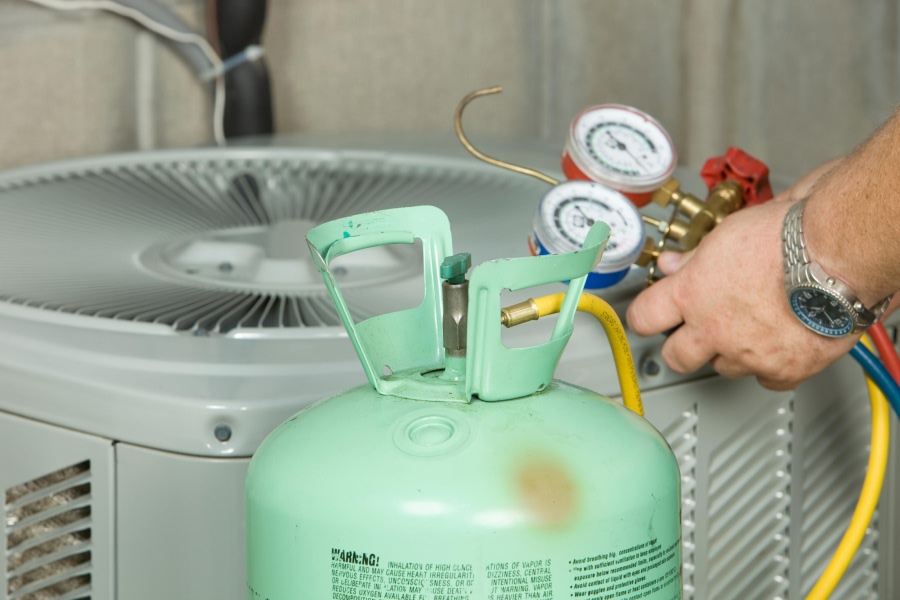
Refrigerant handling is one of the most critical skills every HVAC technician must master. Whether you're just starting your HVAC career or looking to refresh your knowledge, understanding proper refrigerant handling and safety protocols isn't just about compliance—it's about protecting yourself, your customers, and the environment while building a successful career in the HVAC industry.
The HVAC industry has undergone significant changes in recent years, particularly regarding refrigerant regulations and environmental concerns. With the phase-out of certain refrigerants and the introduction of newer, more environmentally friendly alternatives, technicians must stay current with proper handling procedures.
Improper refrigerant handling can result in serious consequences, including EPA fines, personal injury, environmental damage, and costly equipment failures. For new technicians entering the field, mastering these skills from the beginning sets the foundation for a successful and safe career.
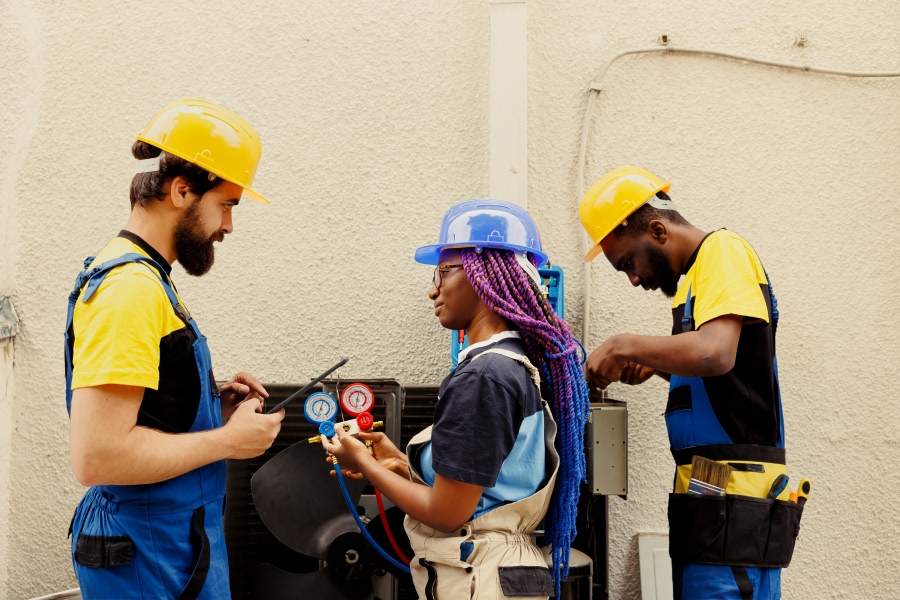
Modern HVAC systems use various types of refrigerants, each with specific handling requirements and safety considerations.
R-410A (Puron) is currently the most widely used refrigerant in residential and light commercial applications. It operates at higher pressures than older refrigerants, requiring specific safety precautions and properly rated equipment.
R-22 (Freon) is being phased out but is still found in many existing systems. While you can't install new R-22 systems, technicians frequently encounter these units during service calls and must know how to handle them safely.
R-32 and R-454B represent newer, lower Global Warming Potential (GWP) refrigerants that are becoming more common in residential applications. These refrigerants have unique handling characteristics that technicians must understand.
R-134a and R-1234yf are commonly found in automotive HVAC applications and some specialized commercial systems.
Each refrigerant type has specific pressure characteristics, temperature relationships, and safety considerations that affect how technicians should handle them during installation, service, and recovery operations.
Before handling refrigerants professionally, technicians must obtain EPA 608 certification. This certification demonstrates your knowledge of Clean Air Act requirements and proper refrigerant handling procedures.
Type I covers small appliances containing 5 pounds or less of refrigerant, such as household refrigerators and window air conditioners.
Type II covers high-pressure appliances like residential and commercial air conditioning systems and heat pumps.
Type III covers low-pressure appliances, primarily large commercial chillers.
Universal Certification combines all three types and is recommended for most HVAC technicians as it provides the broadest scope of work opportunities.
The certification process involves understanding refrigerant properties, recovery procedures, leak detection methods, and environmental regulations. Many successful HVAC professionals recommend getting your Universal 608 certification early in your career to maximize job opportunities.
Proper safety equipment is non-negotiable when working with refrigerants. Refrigerants can cause serious injury if they come into contact with skin or eyes, and some can displace oxygen in confined spaces.
Safety glasses or goggles protect your eyes from refrigerant splashes and debris. Regular prescription glasses don't provide adequate protection from liquid refrigerant.
Chemical-resistant gloves prevent skin contact with refrigerants, which can cause severe frostbite-like injuries. Nitrile or neoprene gloves work well for most refrigerant types.
Long-sleeved shirts and long pants provide additional skin protection. Avoid synthetic materials that might melt if exposed to hot refrigerant lines.
Safety shoes with slip-resistant soles help prevent falls, especially when working on rooftops or in mechanical rooms where refrigerant leaks might create slippery conditions.
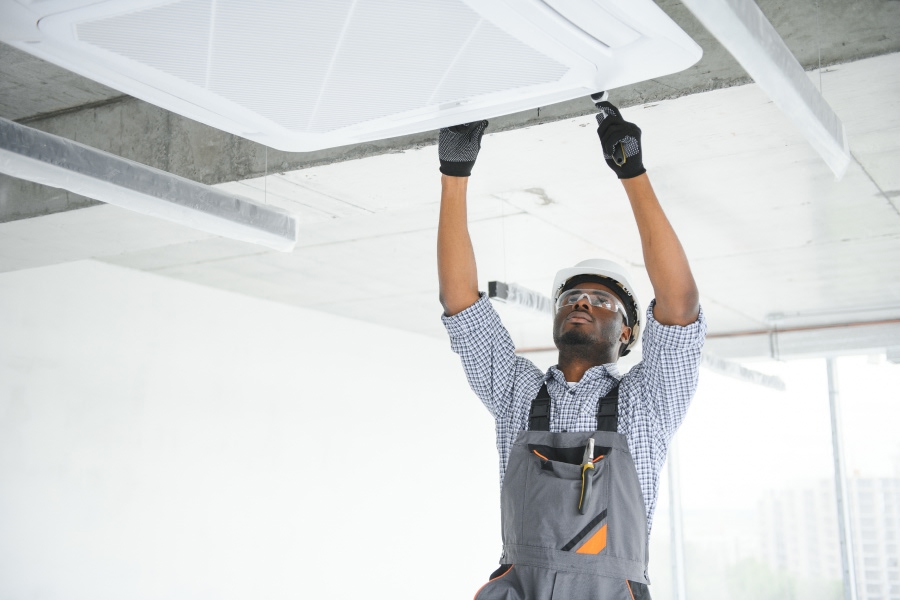
Electronic refrigerant detectors help identify leaks quickly and accurately. Different detector types work better with specific refrigerant families, so understanding your equipment's capabilities is crucial.
Digital manifold gauges provide accurate pressure readings and often include additional features like superheat and subcooling calculations.
Nitrogen regulators and hoses are essential for pressure testing and purging systems safely.
Proper refrigerant handling begins before you even open your tool bag. Every service call involving refrigerant work requires careful planning and systematic execution.
Before beginning any refrigerant work, assess the work environment for potential hazards. Check for adequate ventilation, especially in confined spaces where refrigerant vapor accumulation could displace oxygen. Identify emergency exits and ensure you have clear communication with other team members.
Review the system's refrigerant type and quantity. Larger systems require additional safety precautions and may need specialized recovery equipment. Always verify the refrigerant type using proper identification methods rather than assuming based on system age or appearance.
Refrigerant recovery is required by law for most service and replacement work. Proper recovery protects the environment and allows for refrigerant recycling or reclamation.
Start by connecting recovery equipment using proper hose management techniques. Ensure all connections are tight and secure before starting the recovery process. Monitor pressures throughout the recovery process and never attempt to speed up recovery by adding heat to the system.
During recovery, maintain proper ventilation and monitor for leaks. If you detect refrigerant odors or your leak detector alarms, stop the process immediately and investigate the source.
When adding refrigerant to a system, always follow manufacturer specifications for refrigerant type and quantity. Overcharging can damage equipment and reduce efficiency, while undercharging leads to poor performance and potential compressor damage.
Charge liquid refrigerant into the high-pressure side when the system is off, and vapor into the low-pressure side during operation. Never charge liquid refrigerant into a running compressor's suction line, as this can cause severe compressor damage.
Monitor system pressures and temperatures during startup to ensure proper operation. Document all work performed, including refrigerant quantities added or removed, for regulatory compliance and customer records.
Effective leak detection requires systematic approaches and proper equipment. Small leaks can be difficult to locate but cause ongoing problems for customers and environmental concerns.
Electronic detectors offer high sensitivity and can locate very small leaks. Different detector technologies work better with specific refrigerant types, so understanding your equipment's capabilities improves detection accuracy.
Soap bubble solutions provide visual confirmation of leak locations and work well for verifying electronic detector findings. Use commercial leak detection solutions rather than household soap, which can cause system contamination.
Ultraviolet dye systems help locate intermittent leaks or leaks in hard-to-reach locations. However, dye systems require proper UV lighting and may not be suitable for all refrigerant types.
When repairing leaks, consider the overall system condition and age. Sometimes multiple small leaks indicate systemic problems that might be more cost-effectively addressed through component replacement rather than individual leak repairs.
Always verify repairs using appropriate leak detection methods before recharging the system. A leak that seems repaired might still be present under different pressure or temperature conditions.
Refrigerant handling regulations exist to protect both the environment and public health. Understanding these requirements helps avoid costly violations and supports professional credibility.
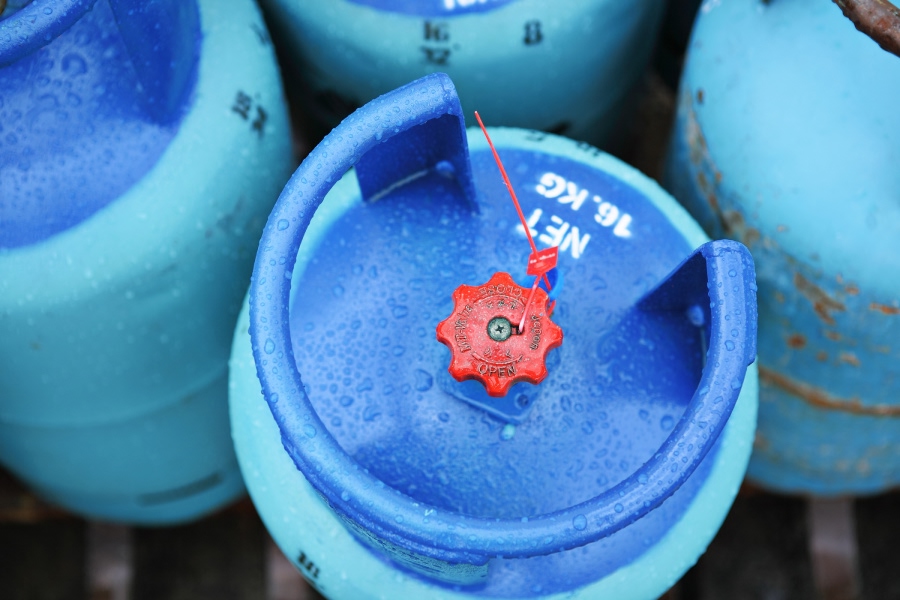
The Clean Air Act prohibits intentional venting of most refrigerants to the atmosphere. This includes releasing refrigerant during service, repair, or disposal operations. Even small amounts of refrigerant must be properly recovered.
Maintain detailed records of all refrigerant handling activities. These records should include dates, refrigerant types and quantities, system information, and technician certification numbers. Proper documentation protects both you and your employer in case of regulatory inspections.
Used refrigerant must be properly disposed of through certified reclamation facilities or reused in appropriate applications. Never mix different refrigerant types, as this contamination makes reclamation impossible and creates disposal challenges.
Experienced technicians understand that refrigerant safety goes beyond basic handling procedures. Advanced safety awareness helps prevent accidents and builds professional expertise.
Refrigerant vapors are heavier than air and can accumulate in low areas, potentially displacing oxygen. When working in basements, mechanical rooms, or other confined spaces, ensure adequate ventilation and consider using personal gas monitors.
Newer refrigerants often operate at higher pressures than older systems. R-410A systems, for example, operate at significantly higher pressures than R-22 systems. This requires pressure-rated hoses, fittings, and gauges designed for high-pressure applications.
Develop and practice emergency procedures for refrigerant exposure incidents. Know the location of emergency eyewash stations and safety showers. Understand the symptoms of refrigerant inhalation and have emergency contact information readily available.
Mastering refrigerant handling and safety protocols takes time and practice. The combination of classroom learning and hands-on experience provides the best foundation for developing these critical skills.
Formal HVAC training programs provide structured learning environments where you can practice refrigerant handling techniques under expert supervision. This approach helps build confidence while ensuring you learn proper procedures from the beginning.
Many successful HVAC technicians emphasize the importance of starting with solid fundamentals rather than trying to learn on the job. Proper training helps avoid costly mistakes and safety incidents that can damage both equipment and professional reputations.
As refrigerant regulations continue to evolve and new technologies emerge, ongoing education remains essential for career success. The HVAC industry rewards technicians who stay current with changing requirements and maintain high safety standards throughout their careers.
Refrigerant handling and safety protocols represent fundamental skills that every successful HVAC technician must master. From understanding different refrigerant types and EPA certification requirements to implementing proper safety procedures and emergency protocols, these skills form the foundation of professional HVAC work.
The investment in proper training and safety education pays dividends throughout your career in terms of job opportunities, professional credibility, and personal safety. Whether you're just beginning your HVAC journey or looking to advance your existing skills, mastering refrigerant handling techniques opens doors to more complex and rewarding work in the growing HVAC industry.
Remember that refrigerant safety isn't just about following regulations—it's about protecting yourself, your coworkers, your customers, and the environment while building a successful and sustainable career in one of today's most in-demand technical fields.
Whether you're just beginning your HVAC journey or looking to advance your existing skills, now is the perfect time to explore comprehensive HVAC training programs that will give you the foundation needed for long-term success in this growing industry.
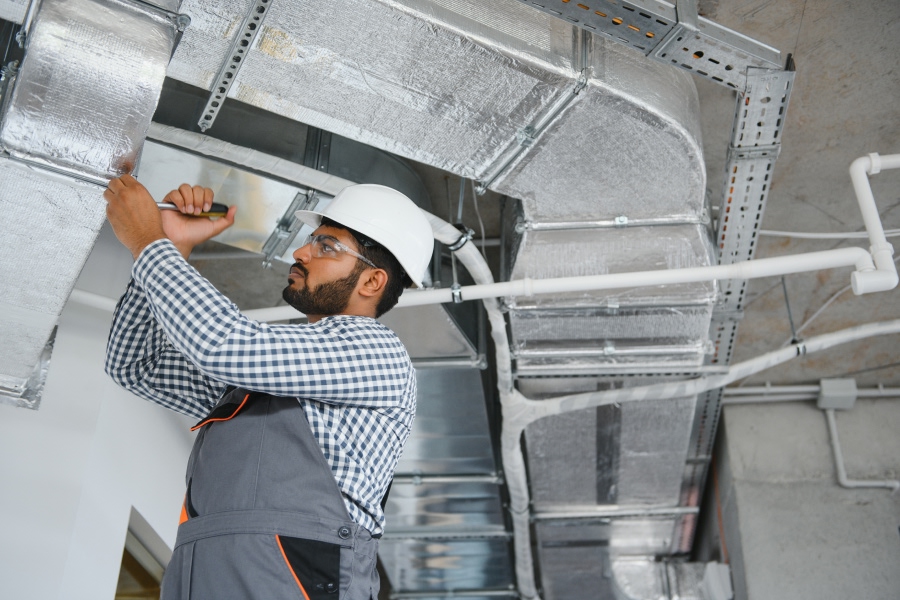
When you start on your journey to becoming a skilled HVAC technician, one of the topics you will want to focus a lot of your attention on is duct fabrication. During your training in this particular topic, you might expect to spend most of your time handling sheet metal, working with tools, and learning how to install ducts. While all of that is true, one skill that often surprises new students when it comes to mastering duct fabrication is math.
Numbers, fractions, angles, and measurements are at the heart of every successful duct system. Without strong math and measurement skills, it’s nearly impossible to create ductwork that fits, functions efficiently, and passes inspection.
In this post, you’ll learn why math is so important in duct fabrication, the types of math you’ll use every day, and how to strengthen these skills as you progress through your training.
At its core, duct fabrication is about precision. A duct system is like the circulatory system of any home or commercial building—it delivers heated or cooled air exactly where it’s needed. If your measurements are off by even half an inch, then the duct may not fit properly, and this can cause airflow restrictions, energy losses, or even costly rework.
Math is the language that ensures accuracy. Whether you’re reading blueprints, cutting sheet metal, or assembling duct sections, math allows you to translate the system’s design into reality. In this trade, “close enough” doesn’t cut it—exact measurements are the standard.
Fractions and Decimals
Sheet metal dimensions, duct sizes, and measurement tools all rely on fractions. For example, a duct might need to be cut at 12 ¾ inches wide or 18 ⅝ inches long. Students must be able to convert between fractions and decimals to use measuring tapes, rulers, and fabrication machines effectively.
Geometry
Ducts aren’t just a collection of boxes and tubes—they can involve a wide range of designs depending on the system’s layout. These can involve anything from angles and curves to transitions. Geometry is therefore an essential math to know because it will help you calculate:
Having a good grasp on the ways to craft basic shapes like triangles, circles, and rectangles will make layout and cutting much easier.
Algebra and Formulas
When you get to the point in your career where you can start creating HVAC system designs, you’ll frequently use formulas to determine duct sizes and layouts. For example, calculating airflow (CFM) often requires formulas that link area, velocity, and volume. Algebra skills are therefore a must-have if you want to solve for unknown values when designing or fabricating ducts to meet system requirements.
Measurement and Conversion
Working in the HVAC field will have you coming across systems that are designed in both standard and metric units. Knowing how to convert inches to millimeters, or square feet to square inches, is vital for keeping your work accurate.
Trigonometry (at an applied level)
When fabricating angled cuts or complex transitions, having a basic understanding of sine, cosine, and tangent can be extremely useful. Even if you won’t need to dive into advanced trigonometry, many fabrication shortcuts will still rely on these basic principles.
Math isn’t an abstract concept in ductwork—it’s practical, hands-on, and constant. Here are some real-world examples of how math might be used over the course of a technician’s work day:
In every case, math ensures that the system is functional, safe, and up to code.
The truth about math is that it is rarely someone’s favorite topic in school. And, making matters even tougher is that many HVAC students haven’t used much math since high school. As a result, math can feel intimidating at first and in some cases even lead to challenges that can affect one’s confidence, such as:
The good news? Like any other skill in the trades, practice builds confidence. The more you apply math in real projects, the more natural it becomes.

The key to being successful in anything, including math, is to embrace it instead of trying to avoid it. Practice using your measuring tape daily. Challenge yourself to convert random measurements into fractions and decimals.
You can also choose from a variety of free apps and calculators that are designed specifically for construction and sheet metal workers to help supplement your learning foundation. Just be careful not to rely on them for everything. Having a sound understanding of math basics is always a better solution if you want to become an in-demand HVAC tech.
When you need to break down problems, take it step by step. Don’t rush through your calculations because that can lead to costly mistakes. Any employer will tell you that precision is always better than speed when learning.
Another tip is when you are in a duct fabrication workshop, work with your classmates. Explaining math steps to others will help reinforce your own understanding. Try to apply math to all your projects. The more you can connect math to your duct fabrication tasks, the less abstract it will feel over time.
Strong math and measurement skills don’t just help you get through your training—they’ll actually play a role in helping you to set yourself apart in the workforce. Employers value technicians who can fabricate ducts accurately, troubleshoot problems, and read plans without constant supervision.
As technology advances, many shops now use computer-aided design (CAD) and automated fabrication machines. While these tools handle some of the heavy lifting, they still rely on technicians who understand the math behind the work. If you can pair hands-on skills with strong math abilities, then you’ll have a major advantage in your career.

The HVAC industry may run on equipment, but it thrives on people. Mastering soft skills like math today will help you build a strong, lasting career tomorrow. But it also helps to enroll in an HVAC duct design and fabrication workshop that is designed to help you learn or improve your practical hands-on skills.
At BTrained, we offer comprehensive workshops that can help get you up to speed on today’s duct fabrication best practices. Our classes are intentionally kept small, so you can better absorb your learning and enjoy the advantage that comes from having more personal attention and one-on-one time with our skilled instructors. If you want to become the best duct fabricator you can be, then this is the program for you.
Our workshops and programs fill up very quickly, so do yourself a favor–enroll today and secure your spot in one of our upcoming HVAC training programs in Huntsville, AL. Get the education and skills you need to embark on a fulfilling and lucrative career in HVAC at BTrained.

When you picture a successful HVAC technician, you might first think about the technical skills they might have, such as knowing how to repair a furnace, install ductwork, or troubleshoot an AC system. But while those hard skills are certainly vital, they’re not the only factor that makes a truly valuable technician stand out. In fact, many employers and customers agree that soft skills—such as communication, customer service, and professionalism—are just as important as technical know-how.
If you’re considering a career as an HVAC technician, then taking the time to develop these skills early on will give you a significant edge. Let’s take a closer look at why soft skills matter and how you can practice them now to set yourself up for long-term success.
Like all trade work, HVAC work is people-centered. While you might think that you will spend the majority of your time working with tools and equipment, you need to remember that you’ll also be entering people’s homes, speaking with customers, collaborating with team members, and representing your company. A customer doesn’t just remember that you fixed their AC; they remember how you treated them during what can often be a stressful situation for them
Employers notice this, too. Many HVAC companies report that they can teach a motivated student the technical side of the trade, but they can’t always teach professionalism, patience, or communication. That’s why soft skills can make you stand out in a competitive job market.
Good communication is one of the most important tools you’ll carry with you. Consider that your customers are going to rely on you to explain what’s wrong with their system, what repairs are needed, and why it matters. The challenge that you will face is that most homeowners don’t speak “HVAC.” So, you will need to convey the information in a way that your customers can clearly understand. Here are some tips that will help you become a better communicator in the field:
Practicing clear, respectful communication shows customers that you care about them, and not just their equipment.

When someone calls an HVAC technician, it’s usually because they’re uncomfortable, worried, or frustrated. Their AC might be out during the hottest day of summer, or their heater may have failed in the middle of the night. How you respond in these moments makes a huge impact. Here are some ways that you can help put the customer at ease and earn their trust:
Great customer service isn’t just about solving problems—it’s about making customers feel supported throughout the process.

For the technicians who stand higher than all the rest, it’s their professionalism that ties everything together. This is about how you present yourself, how you handle challenges, and how you’re remembered once the job is done. Here are some key areas of professionalism that HVAC students can start practicing today:
As you move through your training, you should treat every class project, lab session, or field practice as if it were a real job. Building these habits early will prepare you for the professional expectations of the industry.
Of course, your technical knowledge is still essential. A great communicator who can’t repair a system won’t last long in the HVAC field. The real key is balancing your hard and soft skills. Think of technical training as the “what” of your job, and soft skills as the “how.” Together, they make you a well-rounded technician that customers trust and companies want to hire.

The HVAC industry may run on equipment, but it thrives on people. Mastering your soft skills today will help you build a strong, lasting career tomorrow. But equally as important is choosing an HVAC training program that will help you master the hard skills that you will also need to reach the pinnacle of success.
At BTrained, we offer comprehensive HVAC training that is delivered in such a way that our students are well prepared to enter their new careers ready to go. Unlike many of our competitors, we purposely keep our classes small, so our students can benefit from more personal attention and one-on-one time with our skilled instructors. Plus, our programs emphasize hands-on practical learning, so our students know how to use their tools in the safest and most effective way from the start.
Of course, because we keep our classes small, they do tend to fill up quickly. So, enroll today and secure your spot in one of our upcoming HVAC training programs in Huntsville, AL. Coupled with your outstanding soft skills, the hard skills training you receive at BTrained will mold you into an HVAC tech that both customers and employers will appreciate.
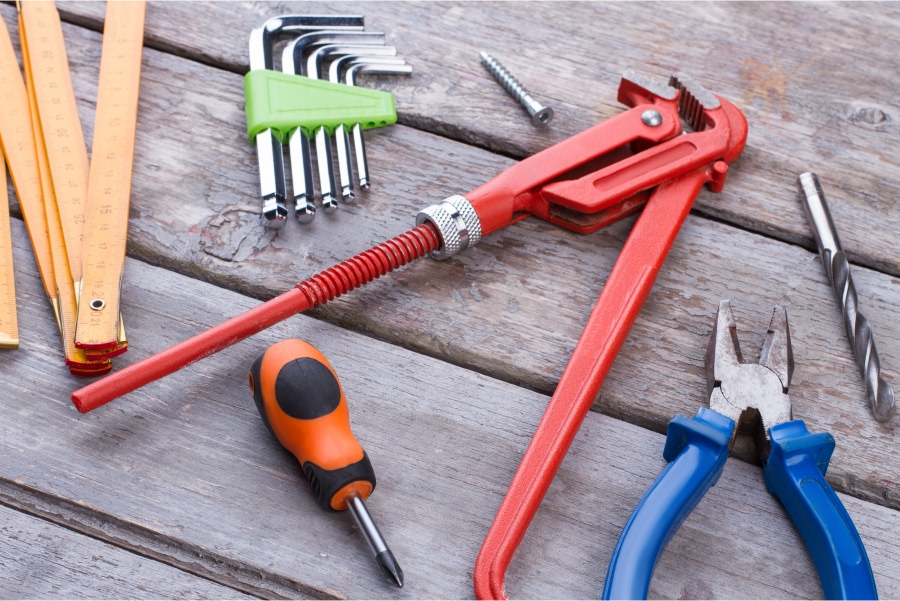
For students entering the HVAC trade, it can be an exciting time because they are on their way to building stable and rewarding careers, but just like achieving any reward, there will be challenges along the way. And one of the most common early challenges many students face is gathering the right tools for the job—without breaking the bank.
It’s not uncommon for long-time professional HVAC technicians to accumulate thousands of dollars' worth of tools over time, but students and apprentices need to start smart. Fortunately, with a focused plan, a few budget-saving strategies, and an understanding of what tools you really need at the start, you can assemble a reliable HVAC tool kit that supports your training and early jobs while keeping your bank account in the black.
Here’s how to build your HVAC tool kit on a budget while still setting yourself up for success.
As a student or apprentice, you don’t need every tool under the sun—just the core gear that you'll use daily. Many of these are required by HVAC schools or employers, and you can expand your collection as your skills grow. Focus on these basics:
When you start shopping for tools, the first thing that you will notice is that tools are expensive! It can be easy to get overwhelmed, but remember, you don’t need to buy everything in one shopping trip. The wiser move, and the least stressful, is to break your purchases into phases:
Buying in phases prevents you from overspending on tools you won’t immediately use, and it lets you prioritize quality on the tools you use most.
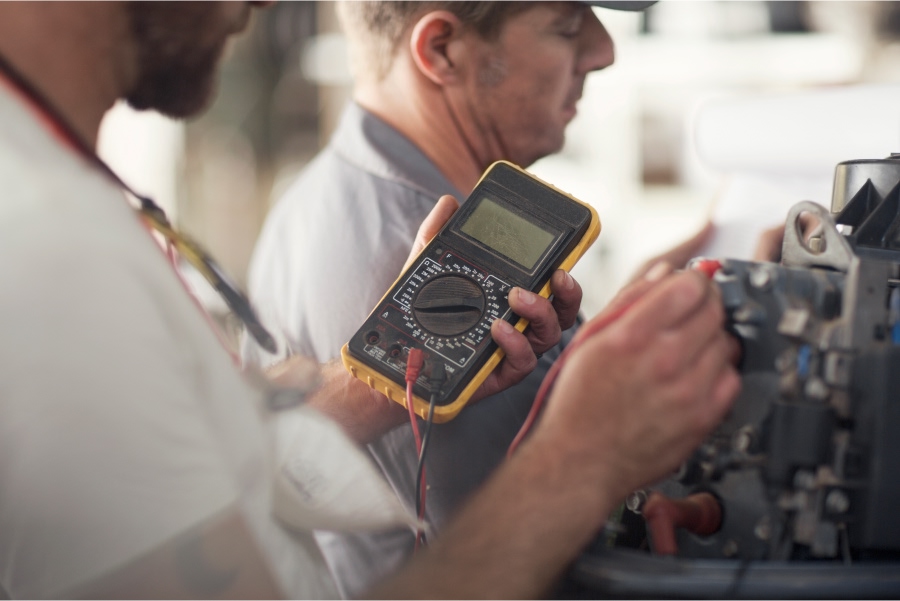
A lot of HVAC tools might seem expensive, but they don’t always have to be. The most important thing when choosing tools is that they are safe and reliable. Here are some budget-friendly tool shopping tips:
There are plenty of fancy tools out there promising to make your HVAC work easier, but not all of them are worth the investment—especially early on. Be wary of the following marketing tricks:
When in doubt, ask your instructors or experienced techs which tools they actually use every day. HVAC pros tend to value reliability, simplicity, and function over flash.

Part of being budget-savvy is taking care of your tools so they last longer. Remember, your tools are an investment and in many cases, some might even provide you with a career’s worth of reliable use. So, you will want to take care of them properly. Get in the habit of:
Well-maintained tools not only save you money in the long run, they also show potential employers that you're serious and professional about your trade.
Building your HVAC tool kit on a student’s budget doesn’t mean cutting corners or being restricted to purchasing low-quality tools—it means making smarter and more informed decisions. Start with the essentials, and then expand your toolbag based on your training and job requirements. Whenever possible, try to invest in quality tools that will last. With each job and class, your toolkit (and your skills) will grow naturally.
And remember: even the most experienced HVAC technician once started with just a basic bag of tools and a willingness to learn. Your career begins with the right training, the right mindset—and the right tools for the job.
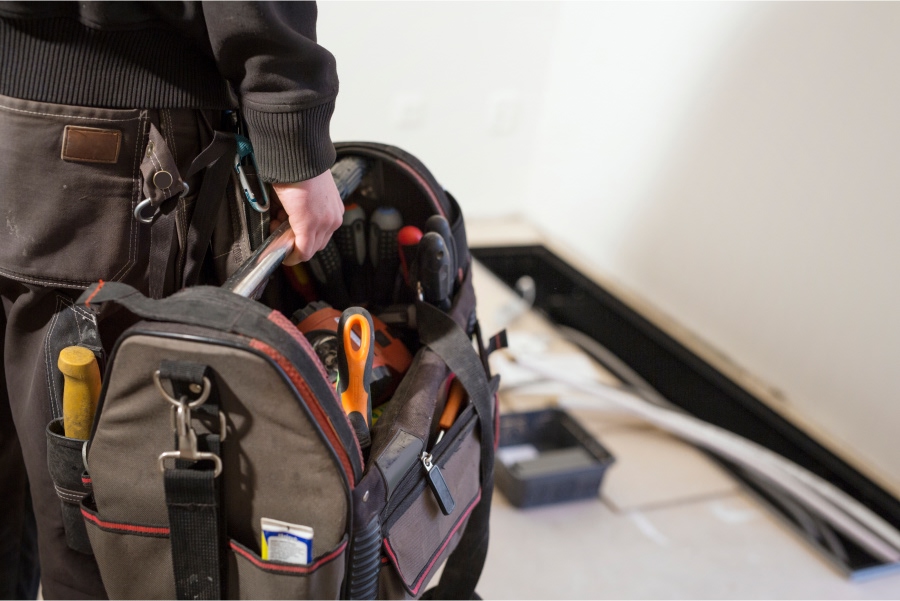
Just as important as choosing the right tools for the job is choosing the HVAC training program that will help you learn the skills that you will rely on every day. At BTrained, our HVAC training programs are specially designed to help you learn exactly what you need to succeed.
We set ourselves apart from the competition because we purposely keep our classes small, so students can benefit from personal attention and one-on-one time with our skilled instructors. Our programs also provide students with plenty of hands-on practice, so you will learn how to use your tools in the safest and most effective way as you gain the skills you’ll need to become a highly skilled, and valued, technician.
Enroll today and secure your spot in one of our upcoming HVAC training programs in Huntsville, AL. Due to our small class sizes, our programs fill up quickly, so don’t delay and enroll now. BTrained can help you get the best start possible into your new career in HVAC!
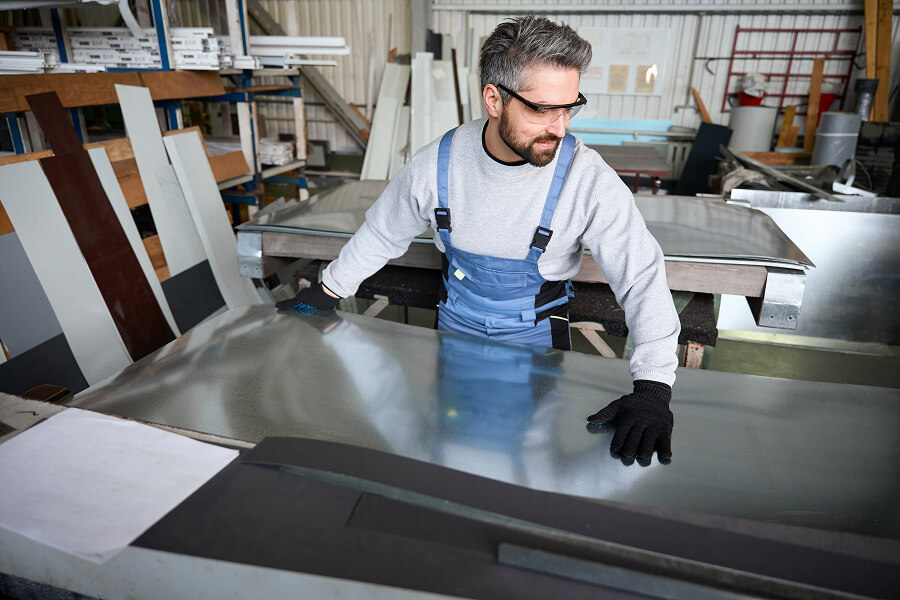
For many HVAC students, the processes that take place in the sheet metal shop can feel like a mysterious phase that exists between design and installation. You know the ducts come from there—but what actually happens behind those shop doors? How do raw metal sheets turn into the custom duct systems that you see in residential basements or attics or in commercial mechanical rooms?
This article pulls back the curtain on the real-world workflow of an HVAC sheet metal shop—what goes on, who does what, and how it all ties into what you’re learning in class.
Everything in a shop begins with the job ticket. Sometimes called a work order, this “ticket” is a detailed sheet that includes information about a project’s duct design and fabrication needs from the project engineer or estimator, including:
The job ticket tells the fabrication team what needs to be made and when. It’s the foundation of shop workflow.
Once the job ticket is reviewed, the layout person (sometimes called a layout tech or pattern maker) gets to work. This role is all about taking the engineer’s drawings and translating them into metal.
Using software like AutoCAD, Revit, or CAMduct, the layout tech prepares templates or sends files directly to a plasma cutter or coil line. If it’s a small shop or old-school setup, they might even manually lay out duct shapes on sheet metal using a ruler, scribe, and compass.
Those who specialize in this phase of duct fabrication need to have:
For students, this is where your math and geometry skills come in handy!
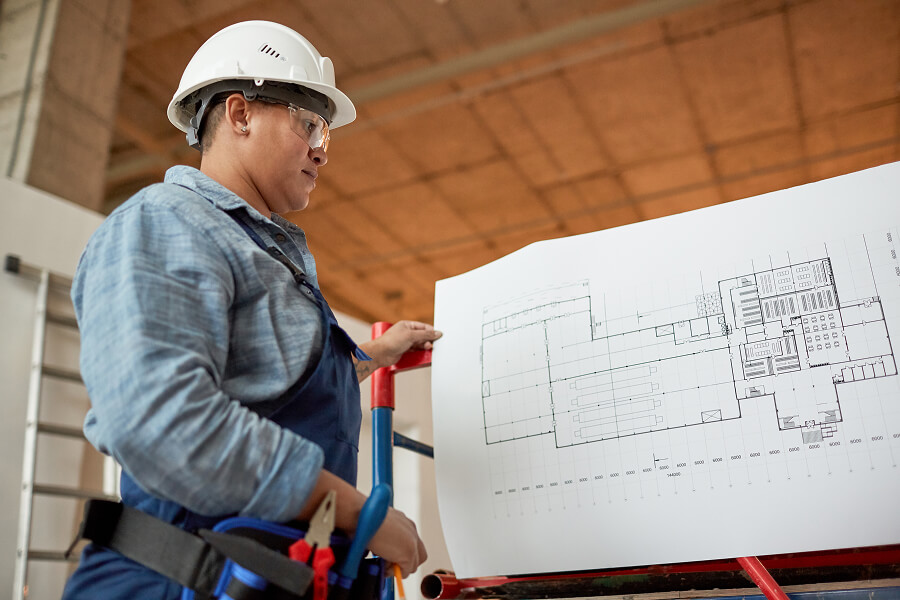
Once the layout is done, the action moves to the fabrication floor. Here’s where you’ll find an array of specialty machines and tools, like:
Fabricators work these machines and handle the metal with skill and care. They follow the layout plans and job ticket to produce the parts that will be needed for the project. Safety is key here—HVAC duct fabrication involves being around metal edges that are sharp, and machines don’t forgive mistakes. Therefore, it is essential to always wear gloves, safety glasses, and steel-toed boots whenever you set foot in a shop environment.
After all the individual parts are cut and shaped, they go to the assembly station. This is where things start to look like actual ductwork.
It is here where the assemblers perform the following tasks:
This stage also includes quality checks. A supervisor or lead fabricator might measure the pieces to ensure everything meets specs. A mistake at this point could cause installation issues or airflow problems on the job site.

Once assembled, each duct section gets labeled based on the drawing or layout system (e.g., “R-12,” “S-3A”) so the installers in the field know exactly where each section goes. After labeling, the ducts are staged on pallets or carts, wrapped or strapped for delivery, and loaded onto trucks for transport.
Duct fabrication shops typically coordinate closely with field supervisors to make sure deliveries arrive in the correct order, so installers aren’t stuck sorting through tons of duct looking for one piece.
Here’s a breakdown of key roles in a typical HVAC sheet metal shop:
As an HVAC student who is being hired to work in a duct fabrication shop, it is common to start as a helper or sheet metal apprentice. As your skills grow, you will start to move up into the more technical positions.

A job in a duct fabrication shop can be fast-paced, especially during peak construction seasons. Workers are often judged by accuracy and efficiency—not just how fast they go, but how few mistakes they make.
It’s a team environment, but communication is key. One mistake in layout can slow down everyone else on the floor. Respect, attention to detail, and a willingness to learn are all traits that will help take you a long way.
Understanding what goes on in a sheet metal shop gives you a huge advantage—whether you're planning to install ductwork or fabricate it. The fact is – when you understand how ducts are made, you will install them better. You will catch problems early. And you might even be able to suggest field-friendly solutions that impress the foreman.
So the next time you walk past the fabrication shop, remember: it's more than just bending metal. It's a high-skill, detail-oriented process that makes modern HVAC systems possible—and it might just be where your HVAC career takes off.
At BTrained, our HVAC training program is just the thing you need if you want to enter this exciting field. We purposely keep our classes small, so you can enjoy more personal attention and plenty of hands-on practice that will help you gain the skills you need to be a highly skilled, and valued, technician.
Enroll today and secure your spot in one of our upcoming HVAC training programs in Huntsville or Birmingham, AL and get the best start possible into the highly rewarding field of Heating, Cooling, and Ventilation!
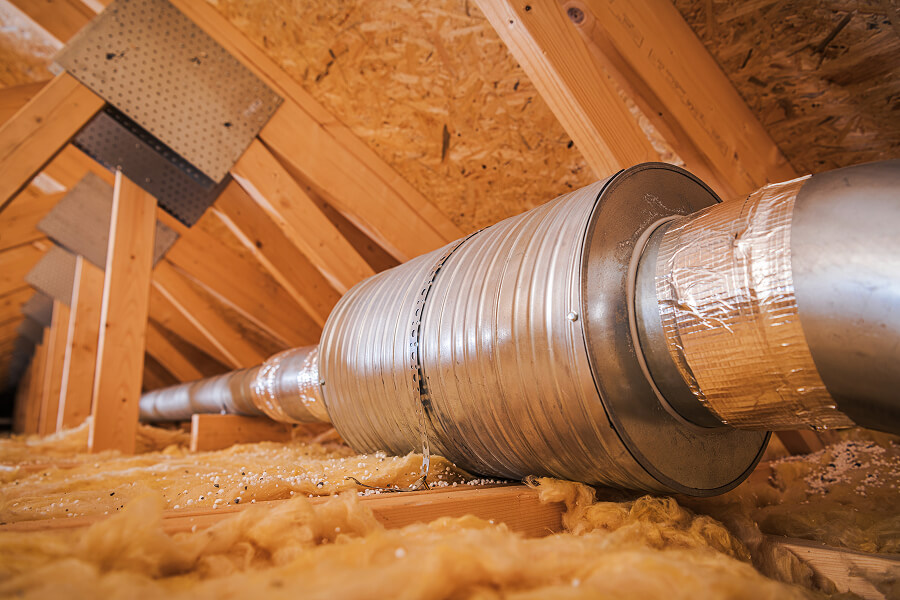
In HVAC duct design, size is important, but it isn’t the only thing that matters—shape plays a major role in a system’s airflow performance, efficiency, and noise levels. Round, rectangular, and oval ducts all serve the same purpose—delivering air—but they each do it in very different ways.
So, as you might expect, it is important for any HVAC student to have a basic understanding of how duct shape affects airflow and when one shape should be chosen over another. In this post, we’ll break down the key differences between round, rectangular, and oval ductwork, and why those differences matter in real-world HVAC systems.
Round ducts are the gold standard for airflow efficiency. Why? Because air moves more easily through a circular space. Here's why this is the case:
Round ducts are ideal for main trunk lines in open ceilings, rooftop units, or exposed designs (like in commercial spaces or modern homes). They’re also great for high-velocity systems where smooth airflow is critical.
While round ducts might be more efficient, rectangular ducts are often a more popular choice simply because they’re easier to fit into buildings—especially when space is tight. This is because rectangular duct has the following attributes:
Rectangular ducts are most commonly used in commercial buildings, office drop ceilings, and tight residential spaces where a round duct simply won’t fit.
Oval ducts combine the performance of round ducts with the space efficiency of rectangular ones. Think of them as "flattened round" ducts. This style of duct offers benefits from both worlds, such as:
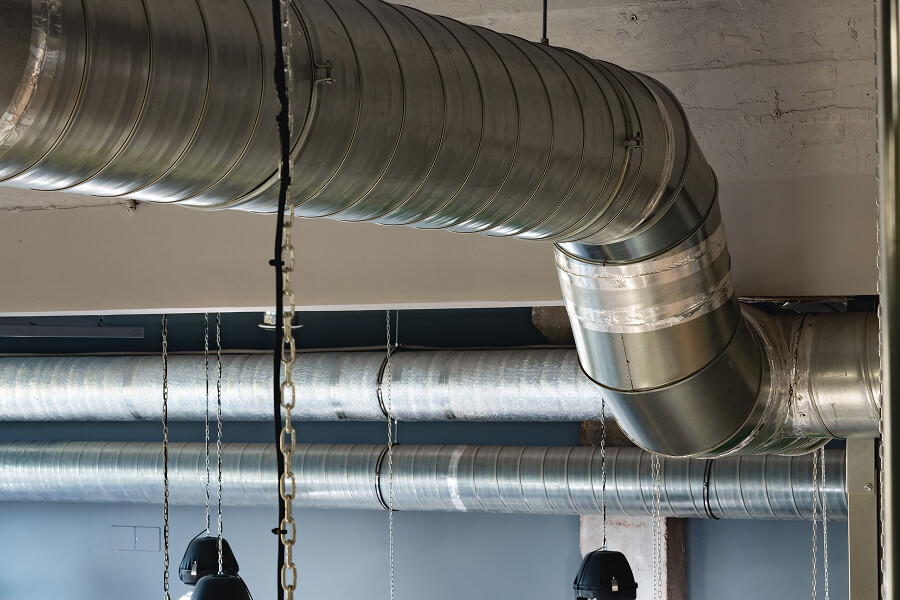
Oval ducts are ideal in architectural spaces where appearance matters, or in retrofitted buildings where headroom is limited but performance is still a priority.
Here’s a simplified breakdown of how airflow typically compares between the three shapes (assuming equal airflow volume):
Round: High airflow efficiency, low pressure loss, low noise potential
Rectangular: Medium to low airflow efficiency, high pressure loss, high noise potential
Oval: Medium airflow efficiency, medium pressure loss, medium noise potential
There’s no one-size-fits-all answer because each project’s needs ultimately depend on the space, budget, and system goals. That said, here’s a quick cheat sheet:
As an HVAC student or technician, understanding the impact of duct shape on airflow will help you design, fabricate, and install better systems. Choosing the right shape is step number one if you want to lower energy costs, reduce noise complaints, and improve comfort for the end user.
Enrolling in BTrained’s Duct Design and Fabrication Workshop is one of the best things you can do if you want to improve your skills working with ducts. At BTrained, we provide you with a more personalized learning experience and all the hands-on practice you need to be the best tech you can be..
Our intensive workshops in Birmingham, and Huntsville, Alabama are purposely kept small and only take one weekend to complete. As a result, it’s important for you to claim your spot early and enroll today. Or, visit us online at btrained.net to see all our upcoming training courses and workshops and just select the one that best fits your schedule.

In a perfect world, every HVAC job would unfold exactly as the blueprints show: straight duct runs, wide open ceiling cavities, and no unexpected obstructions. But as any experienced HVAC technician or student quickly learns, the real world rarely plays by the blueprint’s rules. Common misrepresentations can range from walls being framed differently than expected to plumbing and electrical lines popping up where they shouldn’t be, and sometimes, even the dimensions of the ducts themselves are off.
So, what do you do when the ductwork design you studied on paper doesn’t line up with what you see on-site? Welcome to the balancing act between theory and practice.
HVAC blueprints and building plans are essential documents because they give you pretty much everything you need to know about the HVAC system, like airflow targets, equipment locations, and a general idea of how the system’s ducts should be routed. But the problem lies in the fact that blueprints are drawn before the actual construction begins. They are created with ideal conditions in mind. By the time you arrive with your tools and duct sections, there will probably be a few unexpected surprises waiting for you.
The lesson here is that blueprints are simply a guide. They are not an exact representation of an HVAC system’s network of ducts. Adapting the plan while preserving the system’s performance is the real skill, and that’s where a good HVAC tech really shines.
Understanding why things might be different from what you see on the blueprint will help you be more prepared for the unexpected and allow you to make smart adjustments before installation begins. Some of the more common reasons for these differences can include:

Before jumping in with snips and screws, walk the space with the plans in hand. Compare what’s on paper with what’s physically there. Use a tape measure to confirm critical dimensions, check for obstructions, and visualize the duct layout in real 3D space.
If something doesn’t add up, don’t assume it’ll work itself out. Instead, identify the issue and figure out your options. It’s much easier to rethink a run before you’ve started hanging duct than after.
When making changes, the goal isn’t to throw out the original plan, but rather it’s to preserve the design’s intent. That means keeping the same amount of airflow to each room, ensuring proper return air paths, and minimizing pressure losses.
Some of the ways you can adjust without compromising the design’s intent include:
Of course, you should always communicate with the designer or engineer whenever major rerouting is necessary. They may wind up suggesting an alternative or approving your modification.

Even when improvising, the fundamentals of good duct design still apply. Always keep these core principles in mind:
Remember, bad airflow is more expensive than good planning. Cutting corners to “make it fit” will likely come back to bite you in the form of callbacks or comfort complaints.
If you deviate significantly from the original plan, you need to document the changes. Sketch the new layout, take pictures, and note any airflow changes or additional fittings you added. This protects you in case there are questions later and helps other trades or future service techs understand the modified system. Get into the habit of marking your changes clearly and professionally.

Being able to read blueprints is a skill that all HVAC techs should have in their wheelhouse. But being able to adapt intelligently when the blueprints don’t match reality? That’s what separates a good installer from a great one.
For HVAC students, developing your critical thinking and problem-solving skills is just as important as mastering your technical knowledge and practical skills. Your job isn’t just to fabricate and install ducts—it’s to make the system work the way it is intended, no matter what the site throws at you.
At BTrained, our duct design and fabrication workshop is just the thing you need if you want to become better at this part of your job. This is a two-day workshop that takes just a weekend, so it doesn’t interfere with your weekly work schedule. In it, you will receive the personal attention and hands-on practice that will help you improve the skills you need to be the best HVAC tech you can be.
The best and most valued HVAC techs are those who don’t let surprises get in the way of doing their jobs. Master duct design and fabrication and you will be a highly valued technician that is always in-demand. Enroll today and secure your spot in one of our upcoming ductwork design and fabrication workshops in Huntsville, AL and watch how your career takes off!

If you’ve been paying attention to the headlines lately, you’ve probably seen today’s hottest buzzwords: Artificial Intelligence, automation, and machine learning. Depending on who you ask, AI is either going to revolutionize the trades for the better or take them over completely. For HVAC students just starting their careers, this can sound a little… intimidating. Will there even be HVAC jobs in 10 years? Will robots replace us?
Here’s the good news: HVAC isn’t going anywhere. But it is changing—and if you’re paying attention, that change could make you a better tech, not an obsolete one.
AI (Artificial Intelligence) doesn’t affect HVAC in the way most might expect it to. AI isn’t replacing traditional hands-on workmanship, its use is more about using algorithms and smart tech to improve the way heating and cooling systems operate. Here are a few examples of how AI is currently being applied in the HVAC industry:

HVAC systems are physical, mechanical pieces of equipment. They need installation, maintenance, and repairs by skilled technicians who can climb ladders, cut and fit ductwork, troubleshoot wiring, and understand pressure readings. AI can help make decisions, but to put it simply—it can’t swap out a cracked heat exchanger or run a line set through an attic.
So, while AI certainly has its place in the HVAC field, it is not reducing the need for trained technicians. In fact, it might actually increase the demand for skilled techs. Here are three key reasons why:
One of the best things about being an HVAC student today is that you’re in a great position to grow with the industry. In addition to the practical hands-on skills you will learn in your HVAC technician program, here are some additional skills you should be learning in your own time, so you can thrive in an AI-assisted HVAC world:

Today’s HVAC tech is a person with a toolbag and a tablet. It’s someone who understands both combustion and cloud computing. The ones who thrive won’t be the ones who resist change—they’ll be the ones who ride the wave.
AI is not just coming to the HVAC industry–it’s already here. But rather than taking over, its purpose is to help us work smarter, reduce energy waste, and deliver more consistent comfort to customers. Imagine being able to get an alert on your phone before a system fails, diagnose it remotely, and walk into the job site already knowing which part you need and where it’s located. That’s not science fiction—that’s where HVAC is headed.

AI is encroaching on nearly every aspect of our lives. But instead of worrying that it will steal your job, make it your ally. Learn the systems. Embrace the tools. Stay curious.
At the end of the day, your instincts, your hands, your patience, and your ability to troubleshoot a rattling noise in a crawlspace on a hot day still matter. AI will never make that obsolete.
If you want to learn the practical skills you will need to get started in the field, then enrolling in BTrained’s HVAC training programs is the right choice. At BTrained, we provide you with a more personalized learning experience, so you can master the all-important practical skills that you will use every day in the field.
Our programs in Huntsville, AL are purposely kept small, so you can get the one-on-one attention that will make you a better tech. As a result, it’s important for you to claim your spot early and enroll today. Or, visit us online at btrained.net to see all our upcoming HVAC training courses and enroll in the one that best fits your schedule.

A well-designed HVAC ductwork system is one of the main factors why an HVAC system can maintain energy efficiency, improve the indoor air quality, and enhance the overall comfort in a building. But unfortunately, poorly designed ductwork is a common problem that can lead to inefficiencies, increased utility costs, and uncomfortable indoor environments.
Whether you are a seasoned HVAC professional or a student learning about ductwork design, understanding the warning signs of a bad duct system is crucial to diagnosing and solving customer trouble calls. Here are some of the most common warning signs that can indicate that bad duct design just might be the problem.
One of the most noticeable signs of poorly designed ductwork is temperature inconsistencies between rooms. If some rooms are too hot while others remain too cold, then the duct system may be improperly sized, poorly routed, or suffering from leaks. Inconsistent temperatures typically indicate a lack of proper airflow balance, which prevents conditioned air from reaching all areas evenly.

Weak or insufficient airflow from vents is a major red flag in the ductwork’s design. This issue could stem from errors like undersized ducts, excessive bends, or blockages that restrict airflow. Poor airflow can make it difficult to maintain a comfortable indoor environment and often forces HVAC systems to work harder, leading to premature wear and higher energy costs.
While it is normal for HVAC ducts to make some noises, excessively loud rattling, banging, or whistling sounds can indicate a more pressing problem with the ductwork’s design or fabrication. Common causes of these noisome sounds include loose duct connections, improper sizing, high static pressure, or too many turns in the ductwork. These noises not only create an unpleasant environment but can also result in an inefficient heating and cooling system.

If your customer is complaining that their energy bills are significantly higher than expected after their new HVAC system was installed, then the ductwork might be to blame. Leaky, uninsulated, or inefficiently designed ducts force HVAC systems to work harder to maintain the desired temperature. When ducts lose conditioned air, the system compensates by running longer cycles, which leads to unnecessary energy consumption and higher costs.
If a customer calls and complains that their home is experiencing excessive dust accumulation and poor indoor air quality, then their HVAC ductwork may be the problem. If there are gaps or leaks in the ducts, then the ducts can draw in dust, dirt, and contaminants from unconditioned spaces like attics or basements. If you have a customer who notices an increase in dust levels or suffers from frequent allergies, then you should inspect the ductwork and repair any issues you find.
If a customer makes a trouble call because their HVAC system has been experiencing frequent malfunctions, then the problem could be due to ductwork issues. Poorly designed ducts will usually cause a system to overwork, and this will lead to problems like overheating, frozen coils, or compressor failure. A well-balanced duct system ensures the HVAC unit runs efficiently and lasts longer.

Leaky ducts are one of the most common problems in poorly designed duct systems. If you notice visible holes, disconnected sections, or signs of air leakage, then the duct system is not performing at its best. Sealing leaks and reinforcing weak points will significantly improve airflow efficiency and overall system performance.
An HVAC system that runs for unusually long periods or frequently turns on and off (short cycling) may indicate issues in the ductwork. For example, oversized or undersized ducts can cause improper airflow, forcing the system to overcompensate. Resolving these issues as soon as possible is important because short cycling puts unnecessary stress on the HVAC unit and increases energy consumption.
An effective duct system must have a balanced supply and return airflow. If return vents are improperly placed, too small, or blocked by furniture or other large objects, then it can lead to negative pressure inside the home, making the HVAC system struggle to maintain efficiency. Signs of poor return airflow include doors slamming shut unexpectedly or whistling noises around vents.
When ducts are improperly insulated or have air leaks, condensation can form on the inside walls of the ducts, and this can lead to mold growth. If your customer complains of musty odors or increased humidity indoors, then it could be a sign of moisture buildup in the system. Resolving this issue quickly is important because mold not only affects indoor air quality but it can also pose serious health risks to occupants.
Recognizing the warning signs of poorly designed HVAC ductwork is a valuable skill to have for any HVAC technician. Whether you are troubleshooting a customer’s heating and cooling problem or you design and fabricate your own ductwork systems, knowing what problems to look for will help you improve your results.
At BTrained, we have workshops that are dedicated to helping students and HVAC pros alike to master the art of ductwork design and fabrication. Our comprehensive workshops in Huntsville, AL are specially designed to help you improve your skills in every area of duct design and fabrication. And all it takes is a single weekend.
If you want to become an HVAC tech who is highly valued and always in-demand, then enrolling in a ductwork workshop at BTrained can help you achieve your goals. Our class sizes are intentionally small to enhance each student’s individual experience, so it’s recommended that you claim your spot early. Enroll today and secure your spot in one of our upcoming ductwork design and fabrication workshops in Huntsville, AL and take your skills to the next level!

Heating, ventilation, and air conditioning (HVAC) systems have come a long way, but something that probably isn’t discussed enough is how today’s modern energy-efficient designs drew inspiration from historical cooling and heating methods. It might come as a surprise to some, but ancient civilizations often found ingenious ways to help regulate indoor temperatures, naturally without the aid of electricity or fossil fuels. And by revisiting these traditional approaches, today’s engineers and architects have been able to design HVAC systems that are both sustainable and effective.
Here are some key lessons from historical HVAC techniques that continue to inspire modern energy-efficient designs.
For centuries, civilizations have relied on natural ventilation to help maintain comfortable indoor temperatures. For example, in ancient Persia (modern-day Iran), architects built wind catchers (or "badgirs"). These were tall, chimney-like structures that captured and directed cool breezes into buildings while also allowing hot air to escape. This passive cooling technique created a natural cooling effect without mechanical systems.
Similarly, traditional homes in India, the Middle East, and North Africa were designed with courtyards that facilitated air circulation. Openings at different heights allowed hot air to rise and escape while cooler air was drawn in, thus reducing indoor temperatures.
Today, passive cooling techniques, such as those used by the ancient civilizations, are integrated into modern HVAC designs to help reduce energy consumption. Modern examples of these features include:

Before modern insulation, civilizations used thermal mass to regulate indoor temperatures. Structures made from thick stone, adobe, or mud brick were able to absorb heat during the day and slowly release it at night. This kept interiors cool in the summer and warm in the winter.
One of the best examples of thermal mass use was done by the Ancestral Puebloans (Anasazi) in the American Southwest. They built homes into cliffs, which allowed them to use the earth’s natural insulation to regulate temperature. Another shining example comes from the Romans. The Romans constructed their buildings with thick stone walls that were capable of maintaining stable indoor temperatures.
Today, thermal mass is a key component of passive solar design in sustainable buildings. Some modern applications of this technique include:
By incorporating thermal mass principles, modern buildings can greatly reduce the need for active heating and cooling.
Long before modern air conditioning, civilizations used evaporative cooling to lower temperatures. Archeologists have discovered that in ancient Egypt, people hung wet reeds or cloths in windows, which allowed wind to pass through and cool the air as the water evaporated. Persian engineers built qanats, which were underground water channels, to direct cool air into buildings. The Mughal Empire in India designed palaces with intricate fountains and water features to cool indoor spaces.

In modern times, evaporative cooling techniques are still widely used to help regulate temperatures, particularly in dry climates. Some modern implementations of evaporation cooling include:
By leveraging water’s natural cooling properties, these systems can provide energy-efficient alternatives to traditional air conditioning.
Many historical HVAC methods took advantage of the earth’s stable underground temperatures. In fact, the Ancient Greeks and Romans purposely built their homes partially underground to benefit from geothermal cooling. In China, homes in the Loess Plateau were carved into hillsides, using the earth’s natural insulation to help regulate temperature.
Meanwhile, in Europe, cellars and root cellars were used to help keep food cool, demonstrating how underground spaces are able to maintain stable temperatures year-round.
Today, underground temperature regulation is used throughout the HVAC industry through the use of the following:
When used properly, these systems can significantly reduce the need for conventional heating and cooling, thus cutting energy costs.
Historical architecture often took climate into account when determining a building’s orientation. Ancient Greeks and Romans built their homes with south-facing windows to capture sunlight during the winter while using overhangs to block excessive summer heat.
In Japan, Shoji screens and bamboo shades were used to diffuse light and provide natural cooling. Similarly, Middle Eastern architecture featured mashrabiya screens, which allowed air circulation while reducing direct sun exposure.

Today’s sustainable designs continue to emphasize these strategies through the use of elements like the following:
The historical HVAC methods developed by ancient civilizations have long provided valuable lessons in sustainable design. By incorporating natural ventilation, thermal mass, evaporative cooling, geothermal solutions, and strategic shading, modern architects and engineers have been able to create energy-efficient buildings that work seamlessly alongside mechanical heating and cooling to improve comfort, conserve energy, and increase savings.
With climate challenges increasing and energy costs going through the roof, the wisdom of the past will continue to guide the future of HVAC technology. By embracing these time-tested principles, we can help build a smarter, greener, and more sustainable world for generations to come.
While most of the above concepts may never be dealt with by an HVAC technician in the field, it is nevertheless valuable for a student in the industry to understand how the past has directly impacted the modern day. It should also open one’s eyes as to just how innovative those ancient civilizations were. With climate change threatening our very existence, who knows what other ancient techniques the HVAC field might be able to utilize that will help restore more balance to the planet?
If you want to be part of the future of the HVAC industry, then BTrained’s HVAC training programs can provide you with the foundation you need to get started in this field. Our HVAC training programs in Huntsville, AL will provide you with the skills, confidence, and experience you need to find success in this fast-growing field.
At BTrained, we can provide you with a more personalized learning experience, so you can master the practical skills you will come to rely on every day in the field. You’ll also gain a better understanding of the trade, which will improve your hiring odds on day one. If you want to pursue a rewarding career as an HVAC technician, then it’s important for you to claim your spot early and enroll today. Visit us online at btrained.net to see our upcoming HVAC training courses in Huntsville, AL, and enroll!

A professional HVAC technician who reaches the highest level of their pay grade is one who has consistently proven to meet the demands required to succeed in this field. Simply put, HVAC is not the career for someone who isn’t prepared to practice precision and efficiency in every task they take on. And just as important is the understanding and adherence to many industry standards that are in place to ensure that these systems operate effectively.
One of the most important regulatory frameworks in the HVAC industry is the SMACNA standards. SMACNA, which stands for the Sheet Metal and Air Conditioning Contractors' National Association, provides comprehensive guidelines for the fabrication, installation, and maintenance of HVAC duct systems. For HVAC students and professionals, understanding these standards is therefore essential to ensuring high-quality work, compliance with industry regulations, and of course, a higher paycheck.
SMACNA standards are a set of technical guidelines that were developed to regulate the fabrication and installation of HVAC duct systems. These standards are widely recognized and adopted across the industry to maintain uniformity, safety, and efficiency.
SMACNA publishes a variety of manuals that cover everything from duct construction to energy conservation. Among the most commonly referenced publications is the "HVAC Duct Construction Standards" manual, which details the proper design, materials, and construction techniques for various duct systems.
These standards are used by contractors, engineers, and inspectors to ensure that ductwork meets quality requirements and performs efficiently over time. Following SMACNA guidelines helps to prevent issues such as air leakage, structural failure, and energy loss, which can compromise the performance of an HVAC system.
Featured in the SMACNA standards is a variety of requirements that when adhered to are essential for ensuring the durability, efficiency, and safety of sheet metal, in particular within the HVAC industry. Some of the most important elements that HVAC students will want to focus on will include the following areas.

SMACNA categorizes ducts based on pressure classifications. This ensures that ductwork is designed to withstand the operating conditions of the HVAC system. The main classifications include:
Each classification specifies the material thickness, reinforcement methods, and sealing requirements needed to maintain system integrity.
SMACNA provides guidelines for the type of materials used in duct fabrication. Common materials include galvanized steel, aluminum, and stainless steel. The selection of materials depends on the system's intended use, environmental factors, and the required durability. The standards specify the minimum thickness and protective coatings required for different applications to ensure longevity and performance.
Properly sealed duct joints are essential to prevent air leaks and maintain energy efficiency over time. SMACNA outlines various types of joints, such as slip joints, drive cleats, and flanged connections. Each joint type requires specific sealing methods, including the use of gaskets, sealants, or mechanical fasteners. The standards also define allowable leakage rates and testing procedures to follow that will help verify airtightness.
Duct systems must be properly reinforced and supported to prevent sagging, vibration, and structural failure. SMACNA standards specify reinforcement spacing, gauge thickness, and the use of stiffening elements for ducts of different sizes and pressure classes. Additionally, support hangers and brackets must meet load-bearing requirements to ensure safe and stable installations.
Accurate ductwork fabrication is crucial for proper overall system performance. SMACNA provides the guidelines that fabricators need to follow for acceptable fabrication tolerances, including allowable deviations in dimensions and alignment. These tolerances ensure that ducts fit together correctly and that airflow is not compromised by misalignment or deformation.

Following SMACNA standards is a vital part of being a responsible HVAC installer because these guidelines help ensure that HVAC systems operate efficiently and deliver the desired airflow. Properly fabricated and installed ductwork minimizes pressure losses, prevents air leaks, and maintains indoor air quality.
Additionally, many building codes and regulations reference SMACNA standards. Adhering to these guidelines ensures that an HVAC system is in compliance with local, state, and federal requirements. This is especially important for contractors working on commercial and industrial projects where regulatory oversight is extremely stringent.
By following SMACNA guidelines, HVAC professionals can reduce the likelihood of costly errors and rework. When ductwork is properly constructed, they will maintain their integrity over time, thus greatly reducing maintenance and energy costs for building owners.
If you are an HVAC student who is on route to becoming a skilled technician, then learning the SMACNA standards is a must. Familiarize yourself with the SMACNA "HVAC Duct Construction Standards" manual. Pay special attention to sections on pressure classifications, material specifications, and joint sealing techniques.
It is also important to note that learning the standards will only take you so far. You also need plenty of practical hands-on experience if you truly want to master proper duct fabrication. Working alongside experienced professionals will give you the practice you need to measure, cut, and assemble ducts according to SMACNA guidelines.
When you’re not at work or in the classroom, you should strive to memorize the technical terms used in SMACNA standards, such as static pressure, duct gauge, and reinforcement spacing. This knowledge will help you interpret the guidelines quicker and more accurately.
At work, you should develop a habit of checking your work against SMACNA guidelines. Ensure that all measurements, joints, and reinforcements meet the required standards to deliver high-quality duct systems.
Lastly, remember to continually refresh your education. SMACNA standards are periodically updated to reflect new technologies and best practices. Stay informed about changes by reviewing updated publications and attending ductwork fabrication workshops.

Understanding SMACNA standards for HVAC duct fabrication is vital for anyone pursuing a career in the HVAC industry. By learning and applying these guidelines, HVAC students can enhance their technical skills, ensure compliance with industry regulations, and deliver superior work that meets the highest standards of quality and performance.
At BTrained, our ductwork fabrication workshop is the ideal solution for everyone from entry-level techs interested in learning duct fabrication to veteran fabricators who are looking to get up to date on the latest industry standards. Our comprehensive workshops in Huntsville, AL are specially designed to help you improve every facet of your duct fabrication skills. Over the course of a single weekend, you can dramatically improve your educational foundation, your design and fabrication skills, and your employability.
If you want to take the next step toward becoming the HVAC tech that you know you have in you, then enrolling in a workshop at BTrained is the right move. Our class sizes are intentionally small to enhance the student’s individual experience, so it’s recommended that you claim your spot early. Enroll today and secure your spot in one of our upcoming ductwork design and fabrication workshops in Huntsville, AL!

One of the most challenging skills to master for many HVAC technician students is to read and interpret schematics and blueprints. But this is a critical skill that is required to find success in this field because these documents are the roadmap for installing, maintaining, and repairing HVAC systems.
Whether you're working on a residential unit or a large commercial system, understanding these diagrams is essential for ensuring the system operates efficiently and safely. In this blog post, we’ll break down the basics of HVAC schematics and blueprints, explain common symbols, and provide tips for interpreting these technical documents. Along with the practical hands-on skills you will gain in your HVAC training program, this basic review of how to read and interpret HVAC schematics and blueprints will help set you up for success.
HVAC schematics and blueprints are technical drawings that provide a visual representation of an HVAC system’s design and its components. They are used by engineers, contractors, and technicians to understand how the system is structured and how its parts interact with each other. It is important to note that “schematics” and “blueprints” are terms that are sometimes used interchangeably in the field, but over time you will notice there are subtle differences between the two.
For instance, blueprints are detailed architectural plans that show the layout of an entire building, including the placement of the HVAC equipment, ductwork, and vents. They provide a big-picture view of how the system integrates into the structure.
Schematics, on the other hand, are more focused diagrams that illustrate the electrical and mechanical components of just the HVAC system. They show how parts like compressors, fans, thermostats, and relays are connected and function together.
Both types of documents are essential for HVAC technicians, as they provide the vital information that is needed to install, troubleshoot, and repair these complex systems effectively.
To read and interpret these documents successfully, you need to be familiar with their key components. Here is a breakdown of the different components that are usually represented in these documents.
HVAC schematics and blueprints use standardized symbols to represent equipment and components. Some of the common symbols you will see include:
There is a wide variety of symbols featured in any schematic or blueprint. Luckily, you don’t need to have them all memorized at the start. This is because every schematic and blueprint includes a “legend.” The legend is the key that explains the symbols. Consider this your cheat sheet for understanding the diagram.
An HVAC system’s electrical wiring diagram shows the electrical connections between components, such as motors, switches, and control panels. When reading this document, look for lines that represent wires and note how they connect to different parts of the system.
If you need to review the ductwork layout, then you will find them in the building’s blueprints as this information is not included in the HVAC schematics. The blueprints will usually include detailed drawings of ductwork, showing the size, shape, and routing of ducts. Interpreting this information will help you better understand how air flows through the system.
If you need to know the specifications of the HVAC equipment, such as model numbers, capacities, and installation requirements, then you will usually find this information listed under the equipment schedule on the blueprint. This is usually not listed on the schematic. This list provides crucial details for selecting and installing the right components.
Control diagrams are aptly named because they show how the system is controlled. This includes the placement of thermostats, sensors, and control panels. They help you understand how the system responds to user inputs and environmental conditions.
Both schematics and blueprints can be visually overwhelming to new HVAC techs at the start. But there is a way to read them, so interpreting them isn’t so cumbersome and time consuming.
First, before diving into the diagram, you should review the legend to understand the symbols and abbreviations used in the document. This will save you a lot of time and help prevent confusion.
Next, locate the main components of the system, such as the furnace, air conditioner, ductwork, and thermostat. This will give you a general idea of how the system is structured. Next, trace the flow of air, refrigerant, and electricity through the system. For example, in a cooling system, follow the path of refrigerant from the compressor to the condenser, evaporator, and back. Or, in a ductwork layout, trace the airflow from the air handler to the vents.
Labels and notes are included on these documents because they provide additional information about the system, such as voltage requirements, pipe sizes, or installation instructions. Don’t overlook these details.
If you’re working on a complex system, you may need to refer to multiple documents, such as electrical schematics, piping diagrams, and equipment schedules. Cross-referencing helps ensure that you have a complete understanding of the system that you will be working on.

Reading HVAC schematics and blueprints will no doubt be intimidating at first, but over time and with practice, it will become second nature to you. To help you along your way, here are some of the most common challenges you will face and tips to help overcome them:
Mastering the ability to read and interpret HVAC schematics and blueprints can be a game-changer for your career in this field. It will allow you to install systems correctly the first time, reducing callbacks and customer complaints. It will help you diagnose and repair issues more efficiently, saving your client time and money.
Knowing how to read these documents will also help you communicate effectively with engineers, contractors, and clients. With this skill in your arsenal, you will stand out as a knowledgeable and skilled technician in a competitive job market. You will be more valuable to your employer and find yourself in a better position for promotion.
When you start out on your career journey, learning to read HVAC schematics and blueprints might seem like you’re learning a new language. It may seem daunting and confusing, but keep in mind that with practice and patience, you will master it.
The key to success is to start by studying simple diagrams and gradually work your way up to more complex systems. Remember, this skill is not just about passing exams—it’s about equipping yourself with the tools you need to excel in your HVAC career.
At BTrained, our HVAC training programs will provide you with an outstanding foundation that can help you land a job in this field. Our HVAC training programs in Huntsville, AL are specially designed to help you gain the skills, confidence, and experience needed to become an in-demand HVAC tech.
Part of our strategy for success is that we keep our class sizes small. This allows you to enjoy a more personalized learning experience that provides you with a better understanding of the trade. And it’s a testament to the success of our students that our programs tend to fill up so quickly. If you want to get a jump start on your career as an HVAC technician, then it’s recommended that you claim your spot early and enroll today. Just visit us online at btrained.net to see our upcoming HVAC training courses in Huntsville, AL!

When you work in HVAC, a sizable part of your daily tasks will involve working with ductwork. From installing entire ductwork systems to troubleshooting leaks, having experience in this area is a must. And it should come as no surprise that those technicians who are capable of fabricating ducts are among the most in-demand techs in the field.
The reason is because ductwork is a critical aspect of heating, ventilation, and air conditioning systems. Properly fabricated ductwork ensures efficient airflow, reduces energy consumption, and maintains continuous indoor air quality. But when fabrication projects encounter issues or the ducts are fabricated by a tech with inadequate training, the ducts will compromise system performance. Identifying and avoiding common mistakes are therefore essential to saving time, reducing costs, and improving the longevity of the system. Below, we share some of the most common errors in HVAC duct fabrication and provide practical solutions that will help you address and/or avoid them.
One of the most common mistakes in HVAC duct fabrication is incorrect measurements. Ducts that are too small or too large for the system or the home will lead to airflow restrictions, energy inefficiencies, and increased noise levels.
To avoid this problem, you should always double-check your measurements before cutting any materials. Follow the old adage, “measure twice and cut once.” To help make precise cuts, use tools such as laser measuring devices or CAD software. It is also important to remember to account for fittings, bends, and other components when calculating dimensions.
Choosing the wrong materials for duct fabrication can result in structural weakness, corrosion, or inefficiencies in temperature regulation. For instance, using thin or low-grade materials may lead to leaks or damage over time.
You should always match the material type to the application. For example, galvanized steel is ideal for durability, while aluminum is lightweight and corrosion-resistant. Before designing your duct network, consider the operating environment, such as humidity levels and temperature ranges. Consulting industry standards like SMACNA (Sheet Metal and Air Conditioning Contractors' National Association) guidelines will help you make proper material decisions and specifications.

Leaky ducts are a significant source of energy loss in HVAC systems. Gaps, poorly applied sealants, or insufficient fastening can cause air to escape, leading to reduced efficiency and increased energy costs.
When installing or repairing ductwork, use only high-quality sealants and tapes rated for HVAC applications. Inspect all joints, seams, and connections for proper sealing during and after installation. Never assume that your project is perfect; conduct pressure testing to identify and correct any leaks.
A properly designed HVAC system follows certain airflow principles to ensure optimum operational efficiency. Neglecting these basic airflow principles will lead to issues such as uneven heating or cooling, increased static pressure, and noisy operation. Common design flaws in this area can range from sharp bends and excessive lengths to undersized ducts.
Established duct design principles are there for a reason. Learn them so you can fabricate duct networks that enhance the system’s performance. Things to keep in mind include minimizing bends, keeping runs as short as possible, and using gradual transitions instead of sharp changes in duct size. Always perform airflow calculations to help ensure the ductwork can handle the required volume.

Uninsulated or poorly insulated ducts can result in energy loss and temperature fluctuations. This is particularly problematic in ducts running through unconditioned spaces, such as attics, garages, or basements.
Using appropriate insulation materials, such as fiberglass or foam board, will help prevent heat loss or gain. When installing insulation, make sure it is applied uniformly, with no gaps or compressed sections. It is also vital to choose insulation with the correct R-value for your specific climate and application to achieve the desired results.
When ductwork is improperly fabricated, the end result can generate noise due to airflow turbulence, vibration, or poorly secured components. This can lead to complaints from clients and making the required adjustments to solve the issue will almost always be expensive.
To help minimize noise, use flexible duct connectors and vibration isolators as these pieces are specifically designed to reduce noise transmission in an HVAC system. You should also secure all components firmly to prevent rattling and avoid abrupt changes in duct size or direction because they can create unwanted turbulence. In extreme cases, you may need to take extra steps by incorporating sound-absorbing materials where necessary.
Ducts expand and contract with temperature changes. Failing to accommodate for this movement can cause structural stress, leading to cracks, leaks, or misaligned sections.
When designing any ductwork system, always allow for thermal expansion by including flexible joints or expansion gaps in the design. Use materials that are capable of handling temperature fluctuations without deforming. Additionally, when performing maintenance on systems, regularly inspect the ducts for signs of stress or misalignment.
Miscommunication between teams or lack of detailed documentation are easily avoidable, but they unfortunately do occur and they can lead to errors in fabrication and installation. This often results in rework, delays, and increased costs.
To help avoid these costly problems, be sure to use detailed blueprints and fabrication specifications. Maintain clear communication between design, fabrication, and installation teams. Implement project management tools to track progress and address issues promptly and conduct regular meetings to ensure everyone is aligned on project goals and updates.
When pressed for time, a tech may be tempted to skip the quality control checks, but this will almost always result in substandard ductwork making its way into the final system. Making matters even worse is that the poorly fabricated ducts will lead to inefficiencies, safety hazards, and costly repairs.
A professional HVAC tech is one who will develop a system that includes a robust sequence of quality control processes, including detailed inspections at each stage of fabrication and installation. This commitment will help you recognize potential issues, so you can address them immediately.

Mistakes in HVAC duct fabrication can have far-reaching consequences, affecting system efficiency, cost, and occupant comfort. But all this can be avoided simply by gaining a better understanding of good ductwork fabrication practices. Investing in proper training, tools, and processes not only prevents errors but also builds a reputation for excellence in the HVAC industry.
At BTrained, our ductwork fabrication workshop will provide you with a solid foundation in this particular skill. If you want to become an in-demand professional in this field, then our comprehensive workshops in Huntsville, AL are specially designed to help you gain the skills, confidence, and experience you will need to succeed. We intentionally keep our workshop sizes small, so you can enjoy one-on-one instruction from our highly experienced instructors.
At BTrained, our workshops allow you to gain practical hands-on experience in designing, cutting, and fabricating ductwork. Once complete, you will have a newfound relationship with ductwork and enhanced skills that will help elevate your value. So, if you want to get the training you need to become a skilled HVAC technician, then it’s recommended that you claim your spot early. Enroll today and secure your spot in one of our upcoming ductwork design and fabrication workshop in Huntsville, AL!

If you want to pursue a career as an HVAC technician, then one of the most valuable skills you will need to develop is your ability to troubleshoot common HVAC issues quickly and effectively. Heating, ventilation, and air conditioning systems are complex systems that require a systematic approach to identify and resolve problems. Whether you’re dealing with insufficient cooling, noisy systems, or uneven airflow, understanding the root causes and how to address them can save time, money, and frustration for both you and your clients.
In this article, we’ll provide a brief overview of some of the most common HVAC problems technicians face when in the field, and offer practical tips for troubleshooting them.
HVAC technicians are at their busiest when the weather turns excessively hot or unbearably cold because it is during these times when more customers start calling in complaining about their systems not producing cooled or warmed air. There can be several reasons why an HVAC system isn’t cooling or heating a home adequately enough and some of the most common include:

Occasionally, an HVAC system will just refuse to turn on. This can be caused by a variety of different issues but the most common tend to be centered around the system’s power source, thermostat, and blower motor.
If an HVAC system is having power supply issues, then the first thing you will want to do is verify that the system is plugged in. Next, check that the circuit breaker hasn’t tripped, and/or that the fuses are intact. If it is not a power supply issue, then deeper troubleshooting will be required.
In many cases where an HVAC system won’t turn on, a malfunctioning thermostat is to blame simply because it fails to signal the system to turn on. To troubleshoot, check and test the thermostat to ensure that it is wired correctly and is receiving and sending the appropriate voltage. Sometimes, simply replacing the batteries in the thermostat is all that’s needed to get it working again.
Problems with a system’s blower motor can also be to blame for the system not turning on. This is because if the blower motor is damaged, then the system won’t circulate air. To troubleshoot, inspect the blower motor. With the power off, try to spin the squirrel cage to determine if the motor is seized. Listen for unusual noises or test the motor’s continuity with a multimeter. Replace the motor if necessary.
Sometimes a home’s HVAC system can operate unevenly. When this happens, some rooms may be warmer or cooler than others, and this can negatively impact the overall comfort of the home’s residents. The most common reasons for this problem include:

HVAC systems have a lot of working parts and over time, these parts can start becoming noticeably louder. As a result, noisy HVAC systems are common customer calls. The good thing is that excessive noise doesn’t always mean that the issue is a major one. In fact, more common than not, the cause of a noisy HVAC system is one of the following:
Another common trouble call is one in which a homeowner is concerned about receiving energy bills that are suddenly and significantly more expensive than usual. This is a common issue in cases where a system is older and no longer working as efficiently as it used to. However, it can also be caused by poorly maintained equipment, which can lead to higher energy consumption. In situations where a system is old, replacing it with a newer and more energy efficient model is the most logical choice. But if the system still has life in it, then providing maintenance on it and scheduling the system for routine servicing will help restore the system’s efficiency and delay a complete replacement for some time.
Another potential cause of high energy bills can be related to the ductwork. For example, air loss in ducts forces the system to work harder. Inspect the ductwork and repair any leaks to help minimize air loss and improve efficiency.
And then there are cases where a home’s excessively high energy bills are caused by simple user error. For example, the homeowner may be setting the thermostat too high or too low without understanding that doing so increases their energy use. In this situation, you can educate your customer about the most efficient way to use their thermostat and help them program a heating and cooling schedule that better fits their life and budget.
In the summer, it’s not uncommon for some homeowners to find their evaporator coils covered over with ice and their air conditioning not working. There are a few different reasons why evaporator coils can become frozen, and these include:
A well maintained HVAC system does not produce foul odors, so when a homeowner calls in about bad odors wafting through their vents, there can be a few different causes based on the type of odor. For instance, if the system is producing a burning smell, then the culprit is usually an electrical or venting issue. There may be electrical components that are overheating and/or melting or if there is a crack in the furnace’s heat exchanger, then it could be causing flame rollout. Each of these are very dangerous and need to be fixed immediately.
If the homeowner is complaining about a moldy or musty odor, then the cause will usually be either a blocked condensate drain line or there may be mold or mildew building up inside the ducts. To troubleshoot, check the condensate collection pan to see if there is any stagnant, standing water and if there is, make sure the drain is open by flushing it with a mixture of water and vinegar. If mold in the ducts is to blame, then the system will need to be cleaned and disinfected.

Successfully troubleshooting HVAC problems like the ones listed above requires a combination of technical knowledge, diagnostic tools, and attention to detail. While some technicians are naturally adept at solving complex problems, most gradually build this important skill set through a combination of practical classroom education and intensive on the job training.
At BTrained, our HVAC training programs provide students with an ideal starting off point as they work their way toward becoming experienced and in-demand HVAC techs. If you want to enter this highly rewarding field, then our HVAC training programs in Huntsville, AL are specially designed to help you gain the skills, confidence, and experience needed to succeed. Our class sizes are small, so you can enjoy personalized instruction and they’re designed to fit conveniently within your busy schedule.
At BTrained, you can expect to receive plenty of practical hands-on experience and valuable one-on-one attention from our team of highly skilled instructors. But due to the success of our students, this also means that our programs tend to fill up quickly. So, if you want to get the training you need to start on your path to becoming a skilled HVAC technician, then it’s recommended that you claim your spot early. Enroll today and secure your spot in one of our upcoming HVAC training courses in Huntsville, AL!

It should come as no surprise that with the world increasingly prioritizing energy efficiency, climate control, and sustainable living, the demand for Heating, Ventilation, and Air Conditioning (HVAC) professionals is surging. And as a result, in 2025, the career outlook for HVAC technicians is expected to be brighter than ever.
Whether you're considering a brand-new career in HVAC or are an industry veteran looking to make a change in your career trajectory, this post explores why HVAC technicians are poised for significant opportunities in the coming year.
HVAC technicians are skilled professionals responsible for installing, maintaining, and repairing a wide variety of heating, cooling, and ventilation systems. Their expertise ensures that homes, businesses, and industrial facilities maintain optimal indoor air quality and temperature control. From diagnosing system malfunctions to upgrading equipment for energy efficiency, HVAC technicians play a vital role in creating comfortable, safe, and sustainable environments.

The Bureau of Labor Statistics (BLS) projects a 5% growth in employment for HVAC mechanics and installers from 2020 to 2030, with 2025 being recognized as a particularly critical year. Several factors will drive this demand in 2025, including:

Advancements in technology are reshaping the HVAC industry, creating both challenges and opportunities for technicians. Staying up to date with these changes as the industry progresses will therefore be crucial for career growth. Some of the trends that will continue to impact the industry in the new year will include:
To succeed in the evolving HVAC landscape, aspiring technicians must focus on education and obtaining relevant certifications. In 2025, employers will likely prioritize candidates with the following qualifications:

HVAC technicians enjoy diverse work environments, ranging from residential homes to large industrial facilities, although it’s not uncommon for some techs to specialize in one or the other. While the job can be physically demanding, it offers numerous advantages that can make it especially attractive to someone looking to embark on a rewarding career. Some of the benefits a hard-working HVAC technician can enjoy can include:
Despite its promising outlook, building a career in the HVAC industry is not without its challenges. Technicians often face demanding schedules, especially during peak seasons. Additionally, the physical nature of the job requires stamina and a commitment to safety.
However, these challenges are greatly outweighed by the rewards of a stable, lucrative, and impactful career. By embracing ongoing education and staying adaptable to technological advancements, HVAC technicians can turn these challenges into opportunities for growth.

The HVAC technician career outlook for 2025 is highly optimistic and this will lead to increasing demand for skilled professionals. Aspiring and current technicians who invest in education, certifications, and adapting to new technologies will find themselves at the forefront of a dynamic and rewarding field.
If you’re ready to embark on or advance your HVAC career, now is the time to act. The opportunities are vast, and with the right preparation, you can secure a future in an industry that promises both stability and growth.
At BTrained, our HVAC training programs serve as an exceptional starting point on your journey to becoming an in-demand HVAC tech. Our HVAC training programs in Huntsville, AL are specially designed to help you gain the skills, confidence, and experience needed to succeed in this dynamic and rewarding industry while at the same time fitting conveniently within your busy schedule.
At BTrained, our courses have limited enrollment because we are committed to providing our students with a more personal training experience. In our programs, you can expect to receive plenty of practical hands-on experience and valuable one-on-one attention from our team of highly skilled instructors.
But of course, this also means that our programs tend to fill up quickly. So, if you want to get the training you need to start on your path to becoming an HVAC technician in 2025, then it’s recommended that you claim your spot early. Enroll today and secure your spot in one of our upcoming HVAC training courses in Huntsville, AL!

Heating, Ventilation, and Air Conditioning (HVAC) professionals provide a vital service that helps ensure the comfort, safety, and energy efficiency of every residential, commercial, and industrial building. And with the industry’s growing emphasis on energy-efficient systems and the expansion of green technologies, pursuing a career as an HVAC technician has quickly become one of the most lucrative and secure career paths for those interested in learning a skilled trade.
But what is it really like to work in this field? This post explores the day-to-day realities, skills required, career opportunities, and the benefits of a career in HVAC.
No two days in the HVAC industry are the same, making it an exciting choice for individuals who dislike the routine of most desk jobs. Every day presents unique challenges because HVAC technicians can often find themselves working on a wide variety of systems that control temperature, humidity, and air quality.
The typical tasks of an HVAC tech include:

While most work occurs during regular business hours, technicians may also find themselves responding to emergency calls, especially during extreme weather conditions when HVAC systems are under the most strain. While this can add an element of unpredictability to a tech’s schedule, it also creates opportunities for overtime pay.
The HVAC field demands a combination of technical skills, physical ability, and problem-solving capabilities. Some of the most important skills you will need can include:
Many of these skills can be learned through formal training programs, apprenticeships, or on-the-job experience.
The HVAC industry offers several diverse career paths depending on your interests and expertise. Some of the careers available in this field include:
With experience and additional certifications, technicians can advance to higher-paying roles or even start their own HVAC business.

A career in HVAC typically begins with formal education or training. Many community colleges, trade schools, vocational programs, and dedicated HVAC training programs offer HVAC certifications or associate degrees. While the topics covered in these programs can differ, most will usually cover topics like:
Meanwhile, there are also programs available that can help an emerging technician prepare for their HVAC Contractor’s Exam, improve their ductwork design and fabrication skills, and more.
After completing training, certification is often required, depending on the region. In the U.S., for example, EPA Section 608 certification is mandatory for anyone handling refrigerants. Additional certifications, such as NATE (North American Technician Excellence), can enhance career prospects.
The demand for HVAC technicians remains strong, partly because it is a trade that is driven by population growth, aging infrastructure, and the need for energy-efficient systems. So, this is a career choice that is extremely stable, offering exceptional job security.
It is also a career in which an entry-level technician can earn a decent wage, especially with opportunities to significantly increase their income through overtime, additional certifications, and/or specializations. The HVAC field offers plenty of clear pathways for advancement, whether through technical mastery or business ownership.
Working in different environments and solving unique problems every day not only keeps the job engaging, but HVAC professionals directly impact each client’s quality of life by ensuring optimum comfort and safety in their homes and workplaces, thus making this a very satisfying career choice.
While working in the HVAC trade offers many attractive benefits, it’s not without its own unique set of challenges. For instance, this job can be physically demanding. Working in HVAC often requires long hours, heavy lifting, and working in uncomfortable conditions. This can be especially the case when the workload spikes during extreme seasons.
A career in HVAC also requires continual learning as technology and regulations are always evolving in this industry. Participating in ongoing education and certification updates is therefore a necessity of the job, and these courses are usually taken during your free time off from the job. For those willing to embrace these challenges, however, the rewards of working in HVAC can far outweigh the drawbacks.
If you enjoy working with your hands, solving mechanical puzzles, and want a career with strong earning potential and growth opportunities, then HVAC could be an excellent choice. It’s a field that combines technical expertise with customer service, offering variety and satisfaction in equal measure.
It is important to note that the path to becoming an HVAC professional requires effort and commitment, but by putting in the work, the results can be a fulfilling, stable, and prosperous career. As the demand for skilled trades continues to rise, now is the perfect time to explore opportunities in HVAC.

Whether you’re fresh out of school or considering a career change, the HVAC industry welcomes motivated individuals eager to learn and grow. With the right training and determination, a rewarding career awaits in this ever-evolving field.
At BTrained, we have HVAC programs that can help you achieve your career goals in this fast-paced industry. Our hands-on HVAC training programs in Huntsville, AL are specially designed to help you gain the skills, confidence, and experience needed to succeed in this dynamic and rewarding industry while at the same time fitting conveniently within your busy schedule.
At BTrained, our courses have limited enrollment because we are committed to providing our students with a more personal training experience. In our programs, you can expect to receive plenty of one-on-one attention from our team of highly skilled instructors.
But of course, this also means that our programs tend to fill up quickly. So, if you want to get the training you need to start on your path to becoming a skilled HVAC technician, then it’s recommended that you claim your spot early. Enroll today and secure your spot in one of our upcoming HVAC training courses in Huntsville, AL!

Starting an HVAC apprenticeship is an exciting time in your career because it gives you the opportunity to apply what you've learned in the classroom to real-world scenarios involving actual customers. An apprenticeship bridges the gap between theoretical knowledge and practical skills, and provides you with advanced learning as you work under the guidance of seasoned professionals.
However, excelling in your apprenticeship requires more than just showing up. In this post, we'll explore actionable tips to help you make the most of your apprenticeship experience, so you can stand out, prove your value, and build a foundation for a successful HVAC career.
An apprenticeship will provide you with a valuable learning experience, so approach it with curiosity and openness. Not every task will be glamorous or exciting, but every experience contributes to your development. Some days might be spent troubleshooting systems, while others might involve more routine maintenance. Embrace both. A growth mindset helps you see every task as an opportunity to improve your skills, even when challenges arise.
Asking questions is a major part of this experience. If you don’t understand something, ask for clarification. Your mentors expect you to be curious. It is also important to remember that mistakes are inevitable; what matters most is how you respond and learn from them.

Having a solid understanding of HVAC fundamentals will help set you apart. Apprenticeships move fast, so it's essential to come prepared with knowledge of basic concepts, tools, and safety protocols.
As a result, how and where you choose to acquire your HVAC knowledge is important. You want to enroll in a program that will educate you on common systems like split systems, heat pumps, and packaged units, help you understand the purpose and use of essential HVAC tools, such as multimeters, refrigerant gauges, and leak detectors, and provide instruction on EPA Section 608 compliance and local building codes.
HVAC work can be physically demanding and sometimes work environments can even be hazardous. Therefore, safety should always be a top priority. Following proper safety protocols not only protects you and your mentors and coworkers, but it also demonstrates your professionalism.
When you’re on the job, it is important to always use personal protective equipment (PPE), including gloves, goggles, and steel-toed boots. Never skip safety checks or rush through tasks without proper inspection. Your diligence shows that you take the work seriously. Punctuality also matters. Being reliable and showing up on time are easy ways to earn trust and respect from your team.

Communication plays a significant role in the HVAC field, whether you're working with clients, team members, or supervisors. During your apprenticeship, focus on building effective communication skills. Here are some tips that can help:
Troubleshooting is an essential skill in HVAC work. The ability to quickly identify and resolve problems will make you invaluable to your employer and your team. During your apprenticeship, it is important that you watch how seasoned professionals approach troubleshooting and diagnose issues. When you are troubleshooting, follow a systematic step-by-step process, such as checking for the simplest causes first, and work towards more complex ones.
Another good tip that you should make a habit is to keep a notebook of common issues you encounter and how they were resolved. You will find that this will become a useful reference in future jobs.
An apprenticeship is not just about learning technical skills; it’s also a time to build connections that could benefit your career. Networking with coworkers, supervisors, and clients can lead to future job opportunities or valuable mentorships.
Treating everyone on the team with respect, from senior technicians to office staff, is always highly recommended. After your apprenticeship ends, maintain relationships with those who guided you. A good reference can open doors when you’re looking to further your career. Another tip is to attend HVAC expos, workshops, or local trade association meetings to expand your network.

Employers value apprentices who show initiative and have an eagerness to learn beyond their assigned tasks. Volunteer for new assignments, even if they seem challenging. Seek out extra learning experiences by offering to assist on different types of projects, so you can gain broader knowledge and a wider range of skills.
It is also important to be proactive. If you notice a task that needs to be done, do it without being asked. It shows that you are dependable and invested in your work. And when time allows, ask to observe more complex tasks or installations to help increase your understanding of the trade.
Organization is essential in HVAC work, where schedules, tools, and documentation must be well-managed. As an apprentice, developing good organizational habits early will help you throughout your career. Here are some tips that can help:
Many HVAC apprenticeships lead to industry certifications, such as EPA Section 608 or North American Technician Excellence (NATE). Preparing early for these exams will give you an edge.
A good idea to help you prepare is to study incrementally. Break down study material into small chunks to avoid last-minute cramming. Take practice tests to help you identify areas of weakness and get familiar with the exam format. Perhaps most importantly, take a refresher course to help solidify your education before sitting for your exam.
Excelling in your HVAC apprenticeship requires dedication, curiosity, and professionalism. By focusing on the above tenets, you’ll stand out to your mentors and potential employers. Remember, your apprenticeship is just the beginning of a lifelong learning journey in the HVAC industry. The habits you form now will serve as the foundation for a successful career. Make the most of every opportunity, and you’ll be well on your way to becoming a skilled HVAC technician.
Whether you are starting your journey to becoming a professional HVAC technician or you are looking to improve your chances of passing your contractor’s exam, BTrained has the programs that can help you achieve your goals in Huntsville, AL. Investing in BTrained’s hands-on HVAC training program is the most effective way to ensure you gain the skills, confidence, and experience to succeed in this dynamic and rewarding industry.
At BTrained, we keep our courses intentionally small to better provide a more personal training experience. As a result, you receive plenty of one-on-one attention from highly skilled instructors. Of course, this also means that there are only a limited number of seats available for our programs, and they tend to fill up quickly.
If you want to get the training you need to start on your path to becoming the very best HVAC technician you can be, then it’s recommended that you claim your spot early. Enroll today and secure your spot in one of our upcoming HVAC training courses in Huntsville, AL!

The HVAC (Heating, Ventilation, and Air Conditioning) industry is one that is driven by new technologies and a fast-growing demand for energy-efficient systems. For individuals looking to start a career in HVAC or advance their skills, selecting the right training program is thereby critical to their success. With the rise of online education, many potential HVAC technicians are torn between enrolling in traditional hands-on training or opting for the convenience of online courses.
While both types of training offer unique advantages, the very nature of HVAC work makes hands-on training the superior choice for those who want to truly excel in the field. In this post we will look at the differences between hands-on and online HVAC training courses, with a focus on why hands-on training is essential for mastering the practical skills required for a successful HVAC career.
HVAC technicians work on a growing variety of heating, cooling, and ventilation systems, and many of which involve highly complex equipment and electrical components. As a result, the role of a professional HVAC technician is highly practical, as it requires a blend of technical knowledge and physical skills.
For example, an HVAC technician must know how to:

Given the hands-on nature of this work, it’s clear why practical experience is essential for HVAC training. While online courses can provide foundational knowledge about HVAC theory, thermodynamics, or even system design, they simply cannot replace the real-world experience that a technician needs to confidently and competently handle tools, equipment, and complex HVAC systems.
HVAC work requires not only an understanding of theory but also the ability to physically manipulate systems and tools. Whether you're fabricating ductwork, testing airflows, or wiring control panels, there are countless tasks that require precision and hands-on practice to master.
Hands-on training allows students to perform these tasks repeatedly until they build the muscle memory necessary to execute them efficiently in the field. Without this direct experience, new technicians are more likely to make mistakes when they transition to actual job sites—leading to delays, costly errors, and potential safety risks.
For example, wiring an HVAC system demands close attention to detail and familiarity with electrical components. Simply reading about it in an online course cannot substitute for physically wiring a system yourself, under the guidance of an experienced instructor.
Another of the key advantages of hands-on HVAC training is the immediate, personalized feedback students receive from experienced instructors. In a traditional training environment, students can ask questions, seek clarification, and receive real-time guidance as they work through problems or challenges.
This type of instant feedback is particularly valuable in HVAC training, where small mistakes (such as connecting a wire incorrectly or improperly charging a refrigerant system) can have serious consequences. With an instructor present, students can correct errors on the spot and learn from their mistakes in a controlled environment. This greatly reduces the risk of a new technician making those same mistakes on the job.
In comparison, online training lacks this direct, interactive component. Students in online courses may watch videos or read materials, but without real-time support, they miss out on valuable opportunities to learn through trial and error with professional oversight.

Exposure to Real-World Scenarios: HVAC technicians often work in a wide variety of environments, from residential homes to large commercial buildings. Each job site presents unique challenges—whether it’s cramped spaces, outdated equipment, or varying system designs. Hands-on training allows students to experience these real-world scenarios firsthand, equipping them with the practical problem-solving skills they’ll need to handle diverse job conditions.
Familiarity with Tools and Equipment: One of the most important aspects of HVAC training is learning how to use specialized tools and equipment. From brazing torches to refrigerant recovery systems, HVAC technicians rely on a range of complex tools to perform their jobs effectively. Hands-on training gives students the opportunity to practice with these tools under the supervision of skilled professionals. They’ll learn how to use each tool properly, how to maintain it, and what to look for when something goes wrong.
Safety Training and HVAC Best Practices: HVAC work involves a significant amount of physical risk. Technicians often work with high-voltage electrical systems, hazardous chemicals, and potentially dangerous equipment like power tools and ladders. Understanding and adhering to safety protocols is critical to avoiding injury on the job. Hands-on training ensures that students learn proper safety practices in a safe and controlled environment, where they can practice proper tool use, electrical precautions, and chemical handling with the guidance of an instructor. Online courses may cover safety in theory, but without practical application, students may not fully grasp the importance of these protocols until they’re in a potentially dangerous situation.
While hands-on training is clearly the superior method for developing the practical skills needed in HVAC, online courses do have their place and can offer certain valuable benefits that can help accentuate one’s hands-on learning.
For instance, online courses can be helpful for building foundational knowledge about HVAC systems, including theory, regulations, and the principles of thermodynamics. These courses can provide an excellent starting point for individuals looking to familiarize themselves with the field before committing to a hands-on program.

When it comes to HVAC training, there’s no question that hands-on experience is an essential part of any student’s journey for finding success in the HVAC field. The practical nature of HVAC work, combined with the need for technical skills, safety awareness, and tool familiarity, makes this type of training the best way to prepare for a career in the field. While online courses offer convenience and flexibility, they simply cannot replace the benefits of working with real equipment, receiving immediate feedback, and experiencing real-world job conditions.
For aspiring HVAC technicians in the Huntsville, AL area, investing in BTrained’s hands-on HVAC training program is the most effective way to ensure they have the skills, confidence, and experience to succeed in this dynamic and rewarding industry.
BTrained’s courses are intentionally designed to cater to small sized classes to better provide a more personal training experience. As a result, there are only a limited number of seats available, and they tend to fill up quickly. Therefore, if you want to get the training you need to start on your path to becoming a valued HVAC technician, then it’s recommended that you claim your spot early. Enroll today and secure your spot in one of our upcoming HVAC training courses in Huntsville, AL!
If you just want to talk to someone about a future in the HVAC industry...
Give Us a Call at
(205) 728-7254